Damascus – Gates & Towers دمشق – البوابات و الابراج
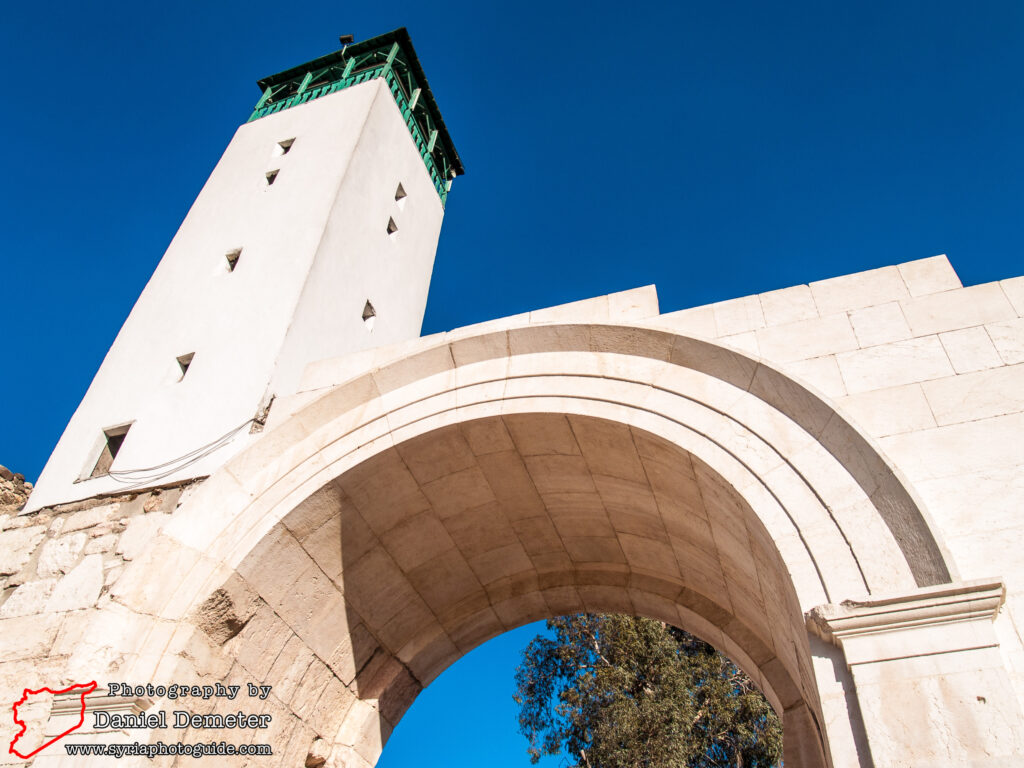
The old city of Damascus (دمشق) was once surrounded by extensive fortifications that included walls, towers, and gates in addition to the more imposing Damascus Citadel (قلعة دمشق). Much of these defenses survive intact, often concealed within markets and incorporated into residential buildings. While the city’s fortifications were originally constructed during the Roman period, what remains today largely dates to Seljuq and Ayyubid era reconstructions. Nur al-Din Mahmoud Zenki (نور الدين محمود زنكي) was responsible for rebuilding and reinforcing the city’s defenses in the middle of the twelfth century in response to growing threats from the Crusaders. Much of his work had to be reconstructed during the Ayyubid period, particularly under al-Saleh Ismail (الصالح إسماعيل).
The most well preserved of the old city’s gates (البوابات) is Bab Sharqi (باب شرقي), the eastern gate. Located in a Christian neighborhood that has adopted the same name, this gate is the only one that largely retains the original Roman design. Known as the “Gate of the Sun” to the Romans, it features a triple arched entrance: a large central passageway for wheeled carriages, and two smaller side passageways for pedestrians. It is believed that the gate was originally constructed in the first century during the reign of Augustus, then rebuilt under Septimius Severus or Caracalla in the late second or early third century. Khalid Ibn al-Walid (خالد ابن الوليد) is said to have entered the city through Bab Sharqi (باب شرقي) when his forces conquered the city in 635. The minaret was added to the gate in the twelfth century under Nur al-Din (نور الدين). North of Bab Sharqi (باب شرقي), on the outer side of the old city walls, is one of two surviving defensive towers (الابراج). An Arabic inscription attributes this tower to al-Saleh Ismail (الصالح إسماعيل), who reconstructed the city’s defenses in 1248-1249. Only the base and first story of the tower remain.
Further to the northwest is Bab Touma (باب توما), the city’s northeastern gate. Named after St. Thomas, this gate is synonymous with the Christian quarter of the old city and has become a popular meeting place. The gate itself is located in the center of a traffic circle, the walls that once extended from it having been dismantled. It largely dates to an Ayyubid reconstruction in 1227, and was restored again in 1333-1334 under the Mamluk governor Tankiz (تنكز). The old city walls continue west of here, following the path of the Barada River (نهر بردى). Bab al-Salam (باب السلام), a few hundred meters away, is one of the most well preserved of the old city gates. An Arabic inscription over the doorway attributes this 1243 reconstruction to the Ayyubid ruler al-Saleh Ismail (الصالح إسماعيل), who was likely building upon earlier work performed under Nur al-Din (نور الدين) in 1171-1172. Continuing west, Bab al-Faradis (باب الفراديس) is located within a small covered market near to al-Seida Raqiyeh Mosque (جامع السيدة رقية). Dating back to Ayyubid rebuilding of the city’s fortifications in 1132-1142, only the outer door of the original double gateway survives. Also located in a covered market, further west and near to the Damascus Citadel (قلعة دمشق), is Bab al-Faraj (باب الفرج). Nur al-Din (نور الدين) was responsible for creating this entrance to the city, as there was no earlier Roman gate in this location. The design, featuring alternating bands of black and white stone, reflects its purely Arab origins. The present gate dates from an Ayyubid reconstruction in 1239-1241.
There are two modest gates and a tower in the southwestern quarter of the old city. On its western edge, Bab al-Jabiyeh (باب الجابية) is hidden away in a textiles market to the east of al-Sinaniyeh Mosque (جامع السنانية). This gate features Roman blocks in its lower foundations, but mostly dates to a 1164 reconstruction under Nur al-Din (نور الدين). Further work was performed under the Ayyubids in 1227. This gate represented the western end of the main colonnaded axis of the Roman city, extending 1.3 kilometers east to Bab Sharqi (باب شرقي). Not far to the south, hidden away in the courtyard of a modest hotel, is a round tower constructed in 1173. An impressive band of Arabic inscription attributes the tower to Nur al-Din (نور الدين). Finally, on the southern edge of the old city is the modest Bab al-Saghir (باب الصغير). Originally the Roman Gate of Mars, this entrance was reconstructed in 1156 under Nur al-Din (نور الدين) and then rebuilt again during the Ayyubid period. Large blocks of Roman masonry are evident in the foundations of the gate, and a small minaret was built above.
Note that Bab Kissan (باب كيسان), the southeastern gate of the old city, has been converted into a church. It is covered separately as Saint Paul Church (كنيسة القديس بولس).
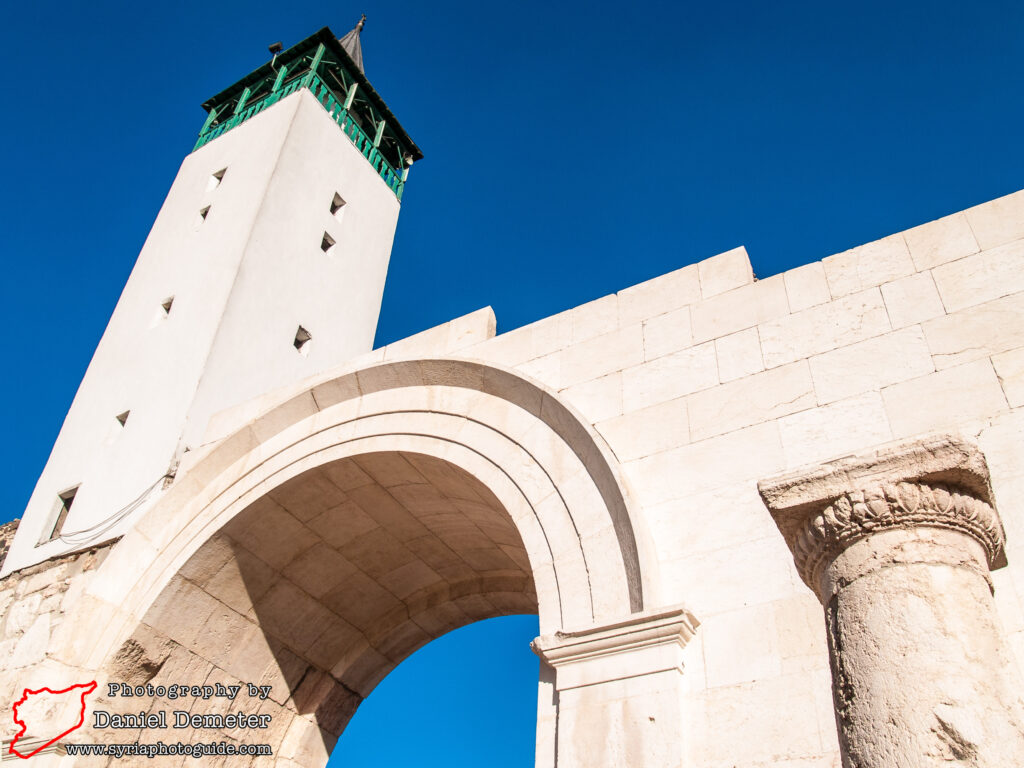
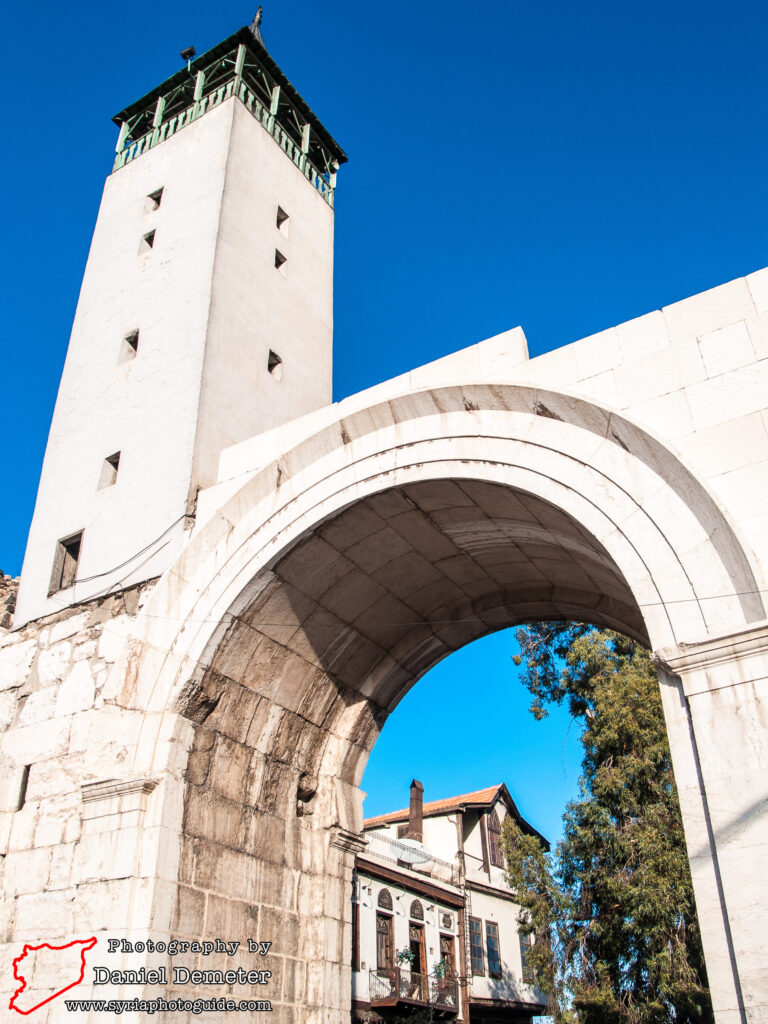
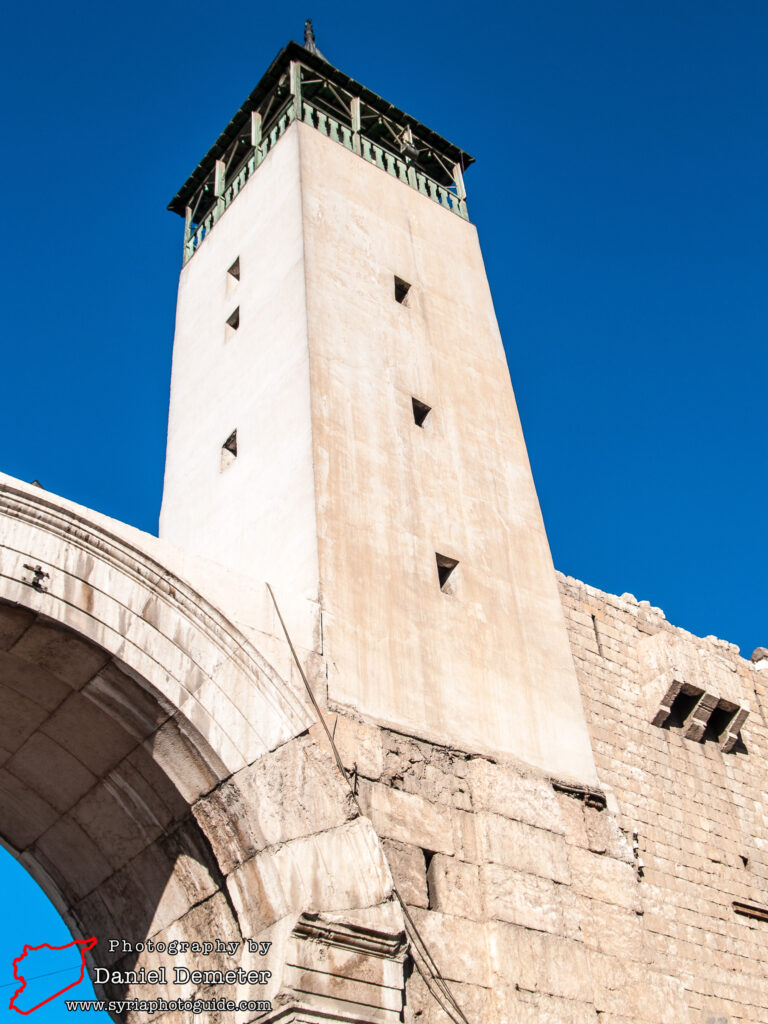
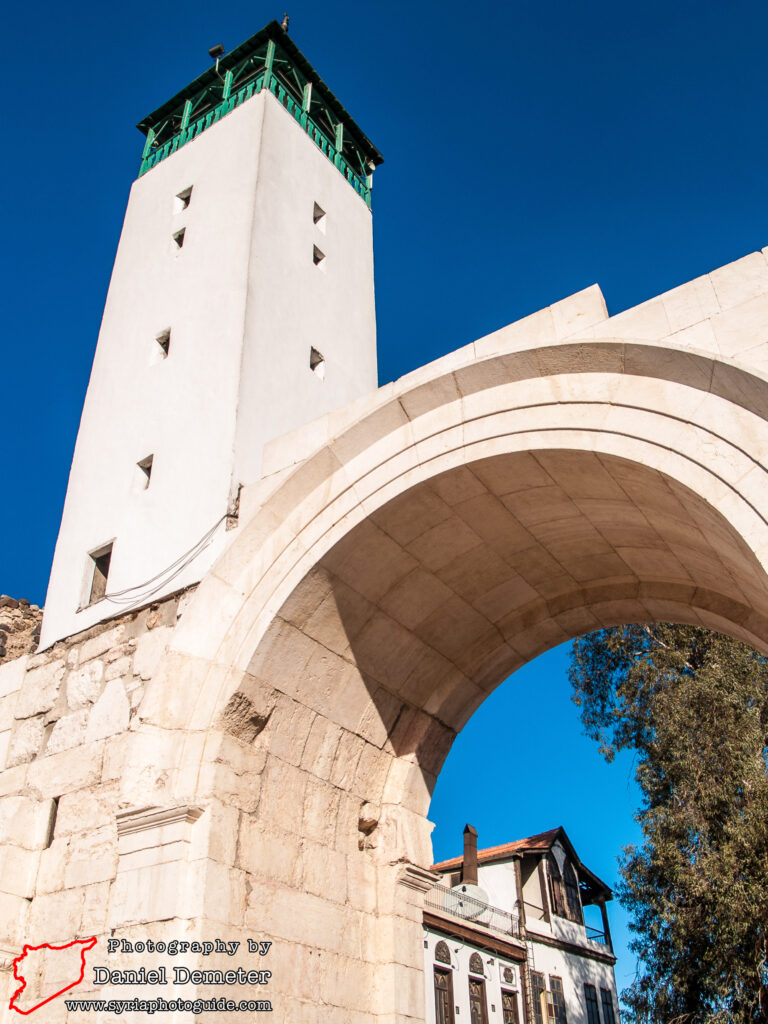
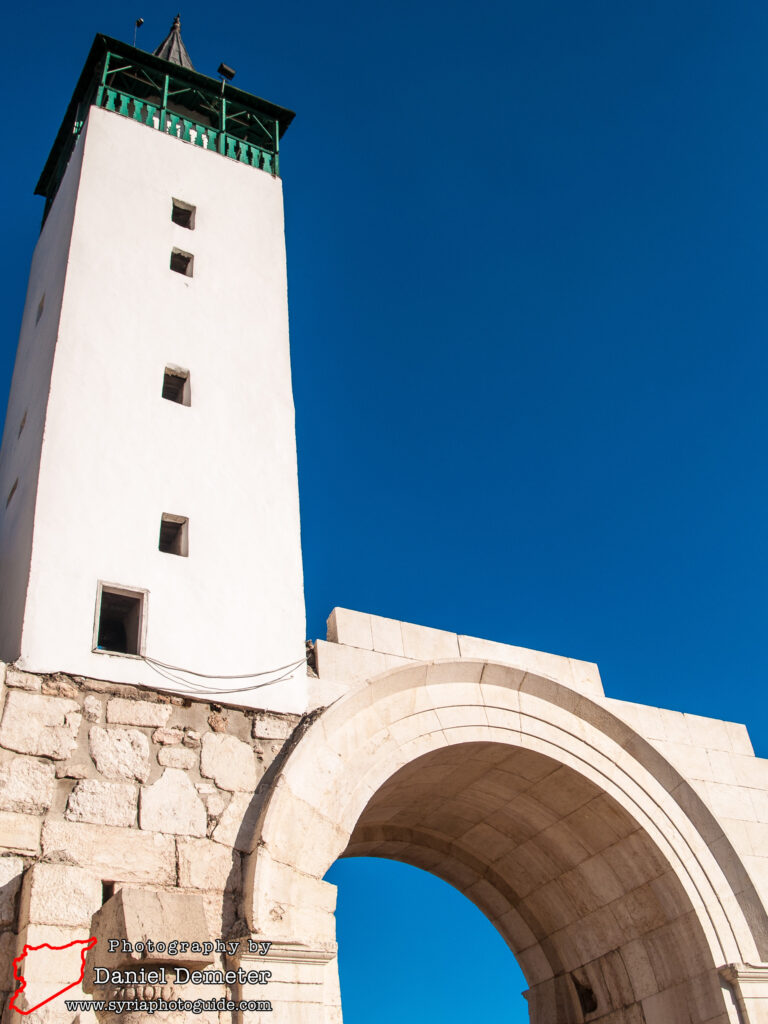
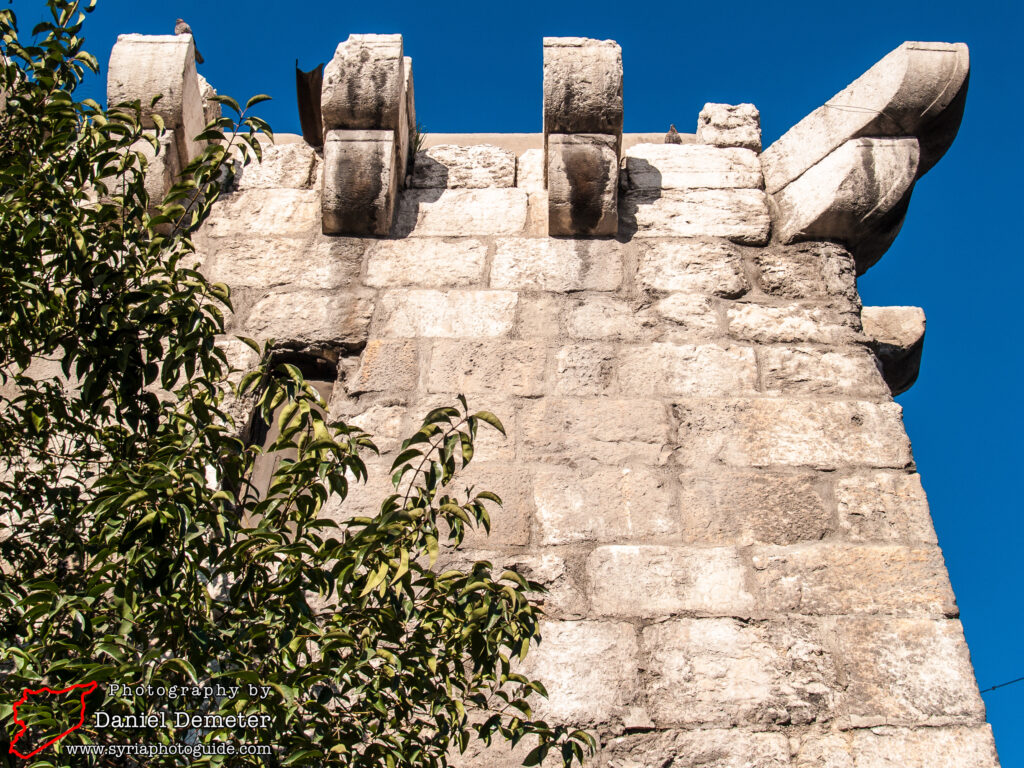
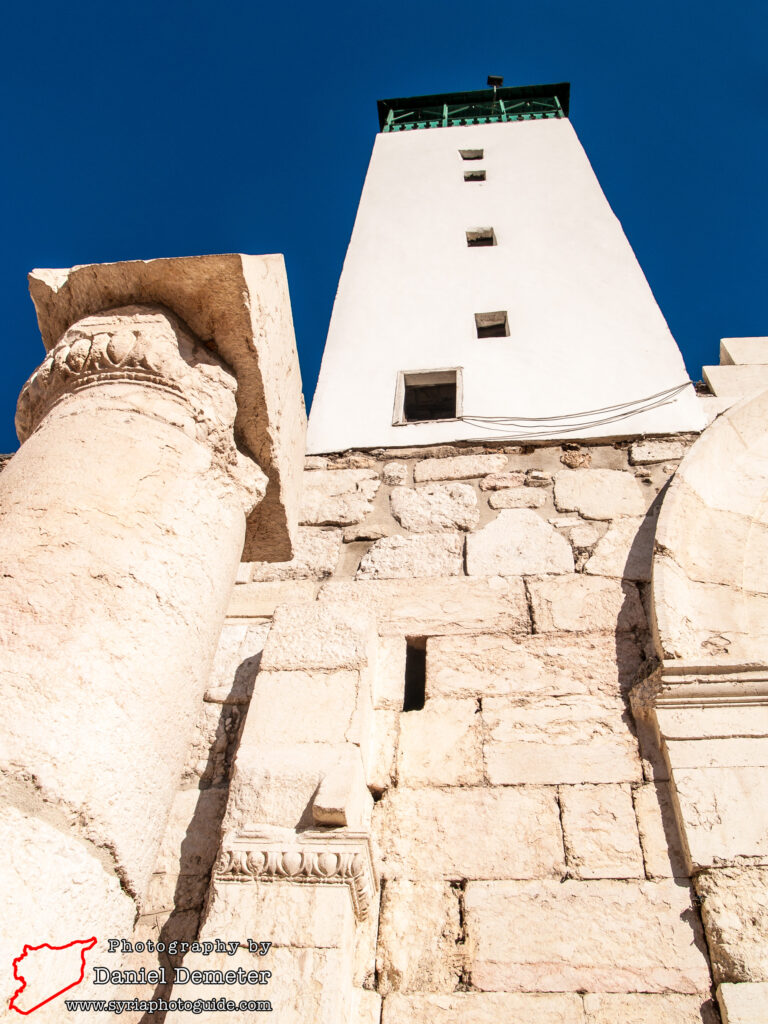
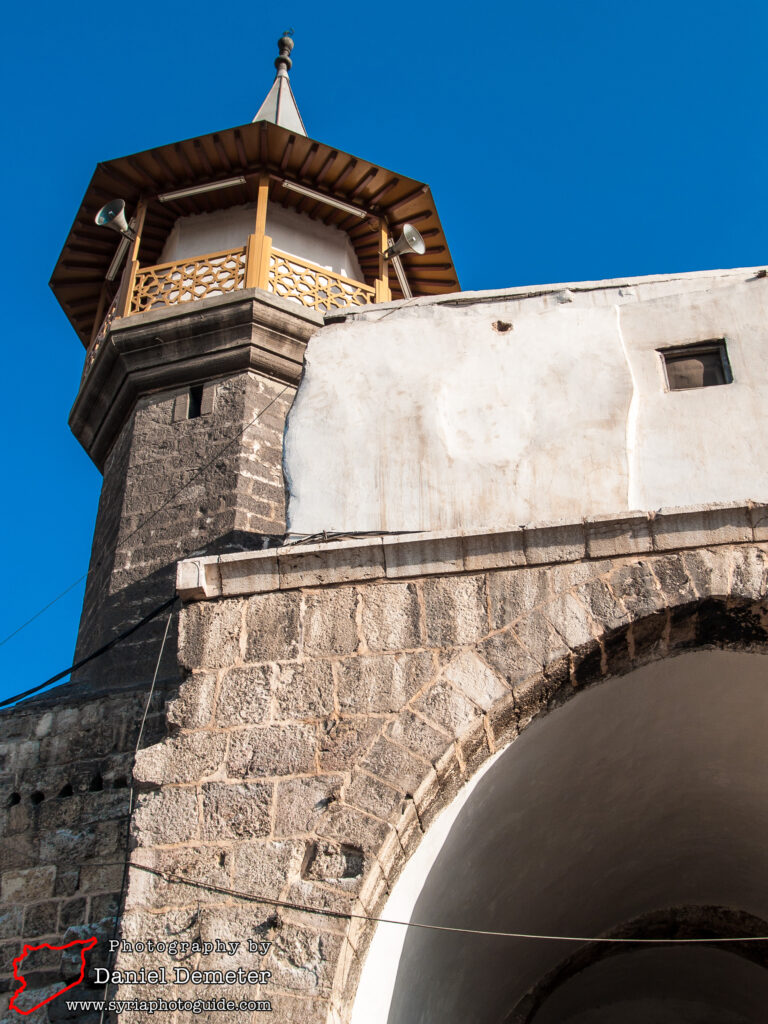
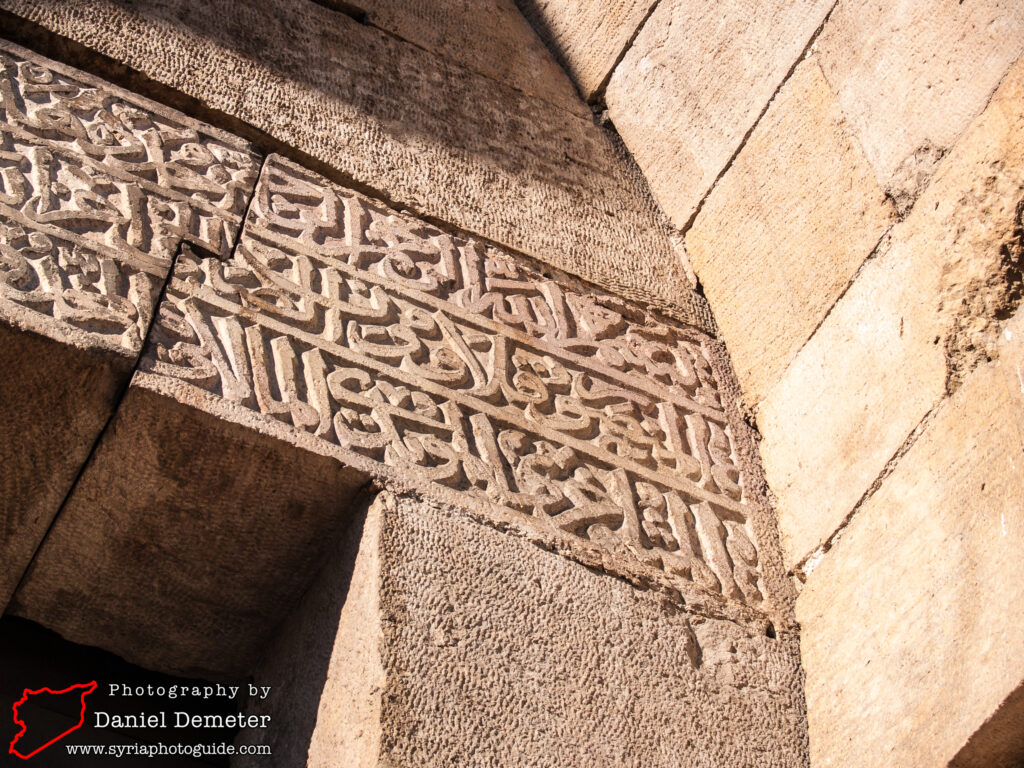
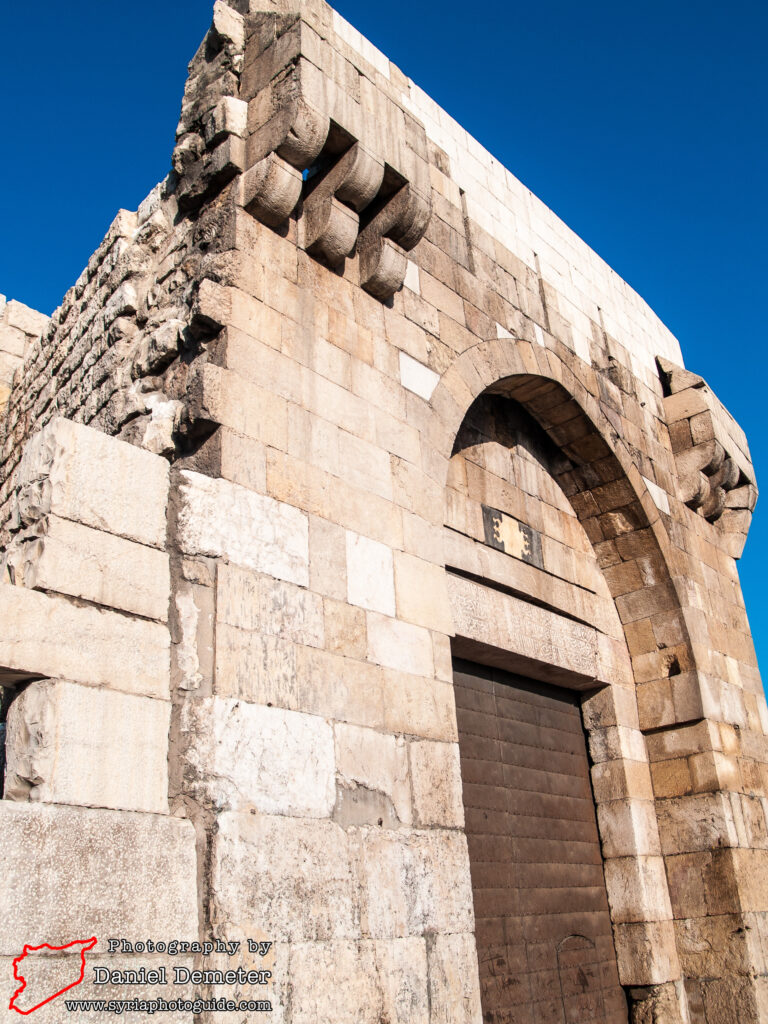
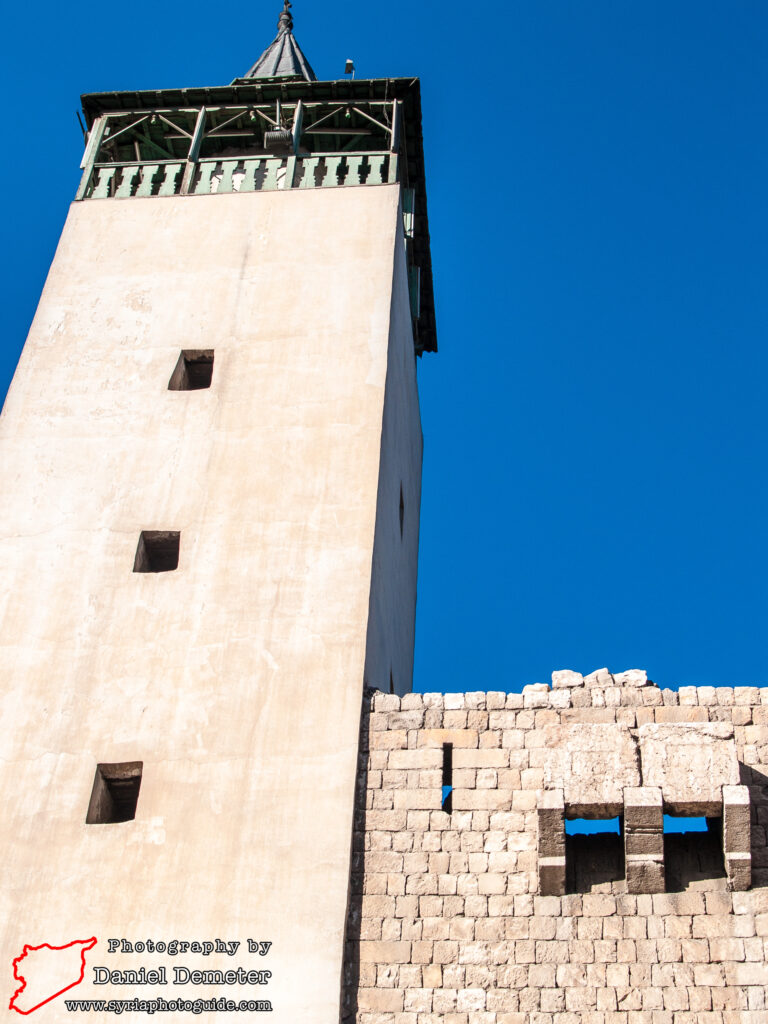
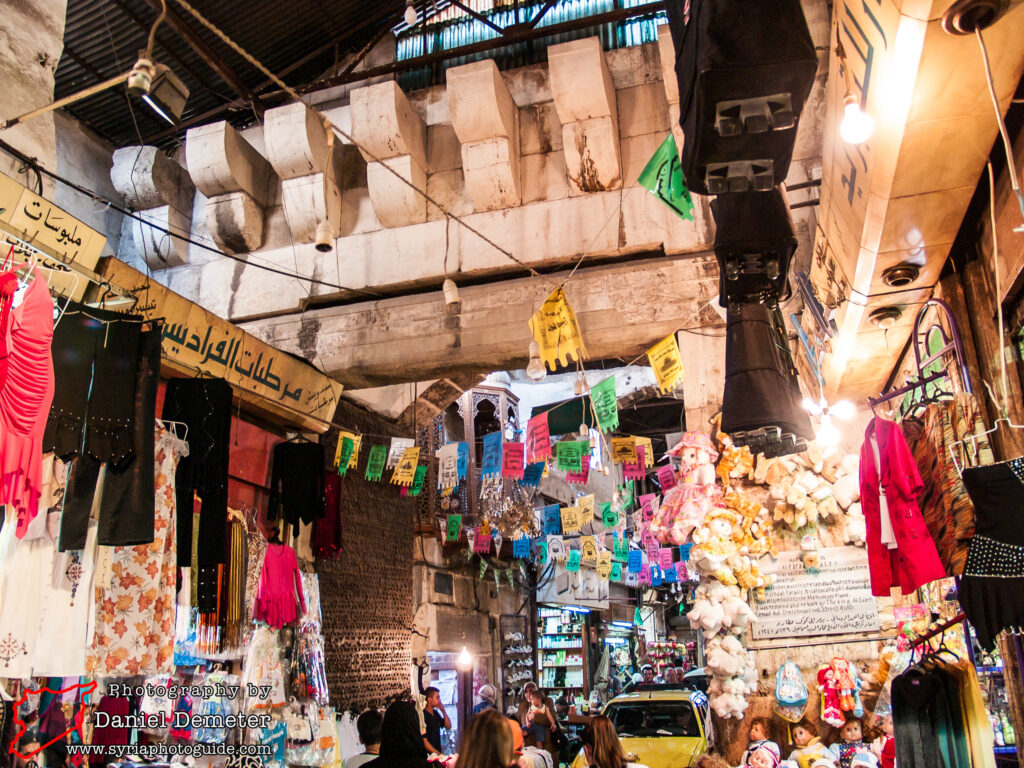
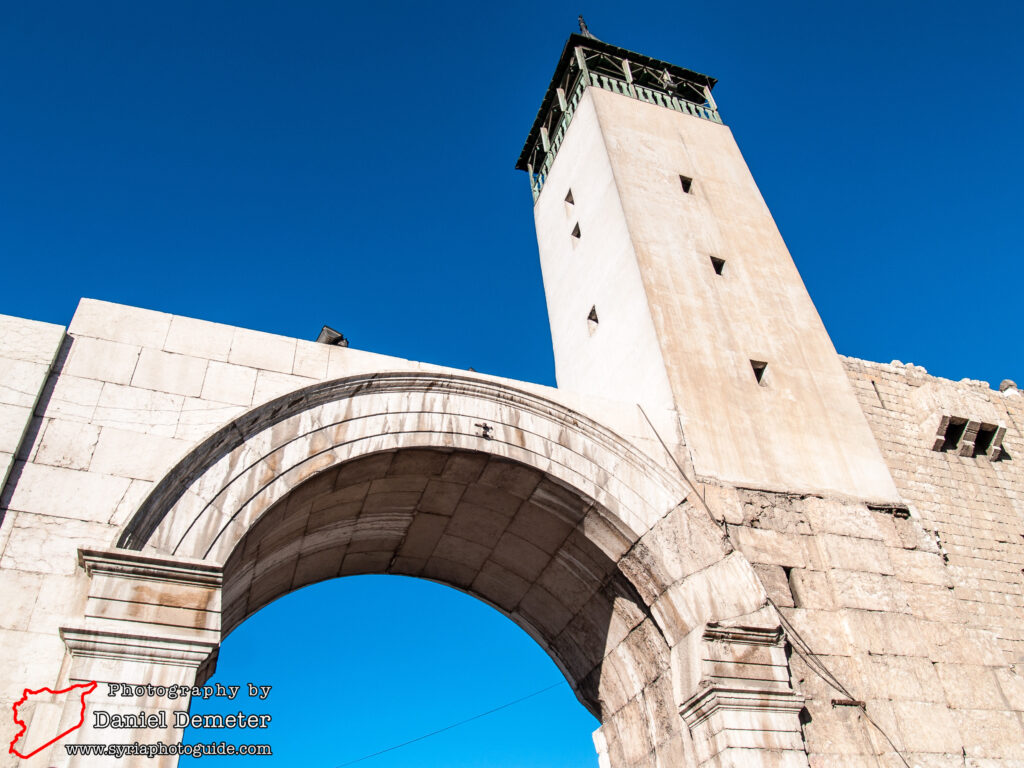
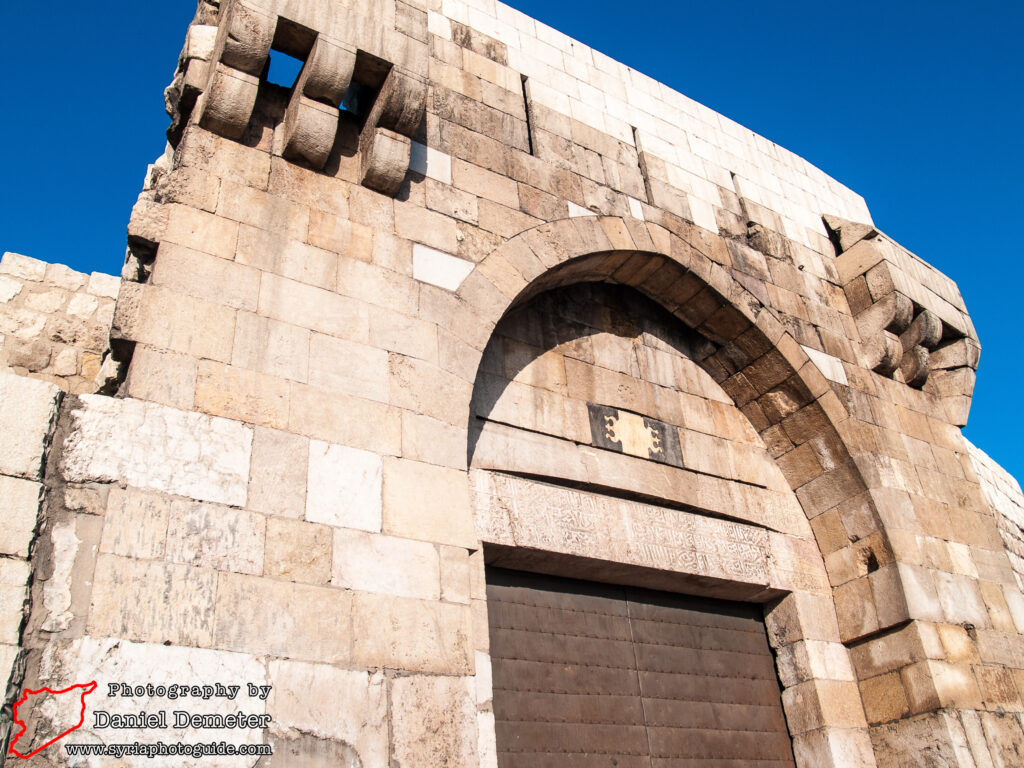

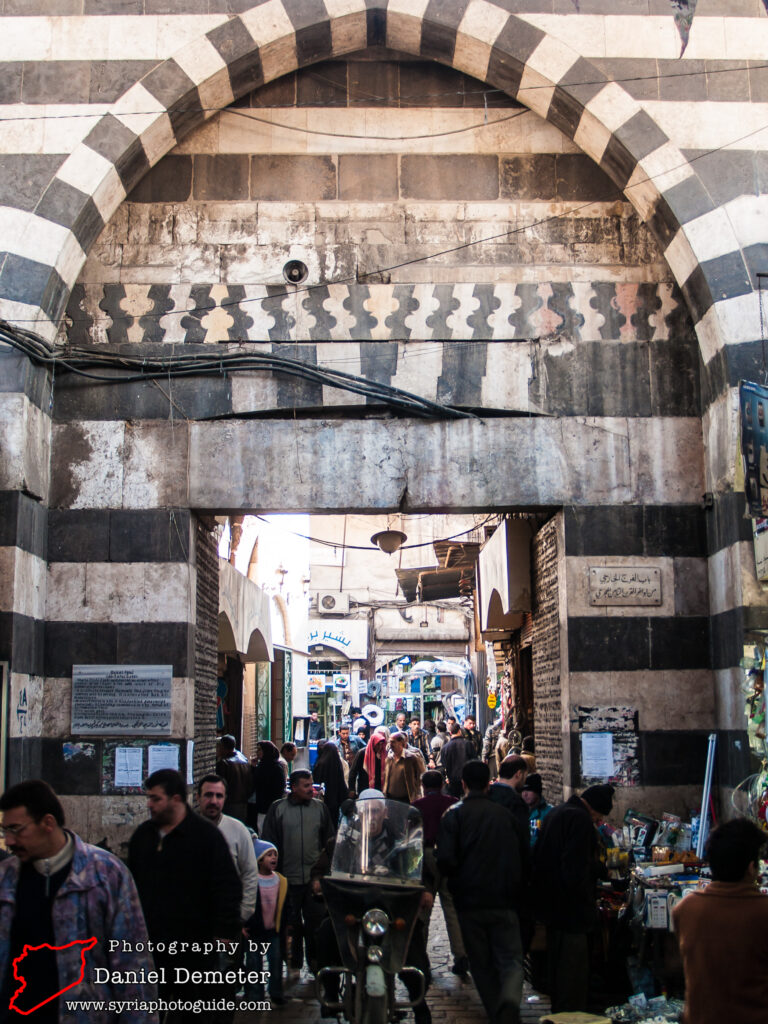
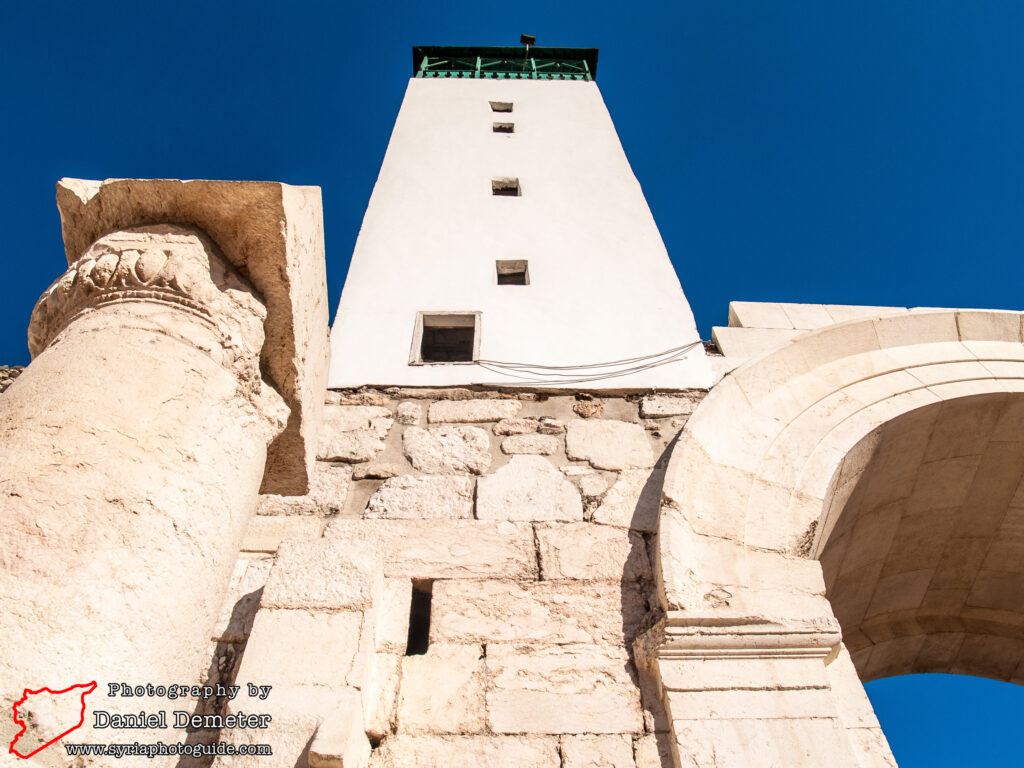
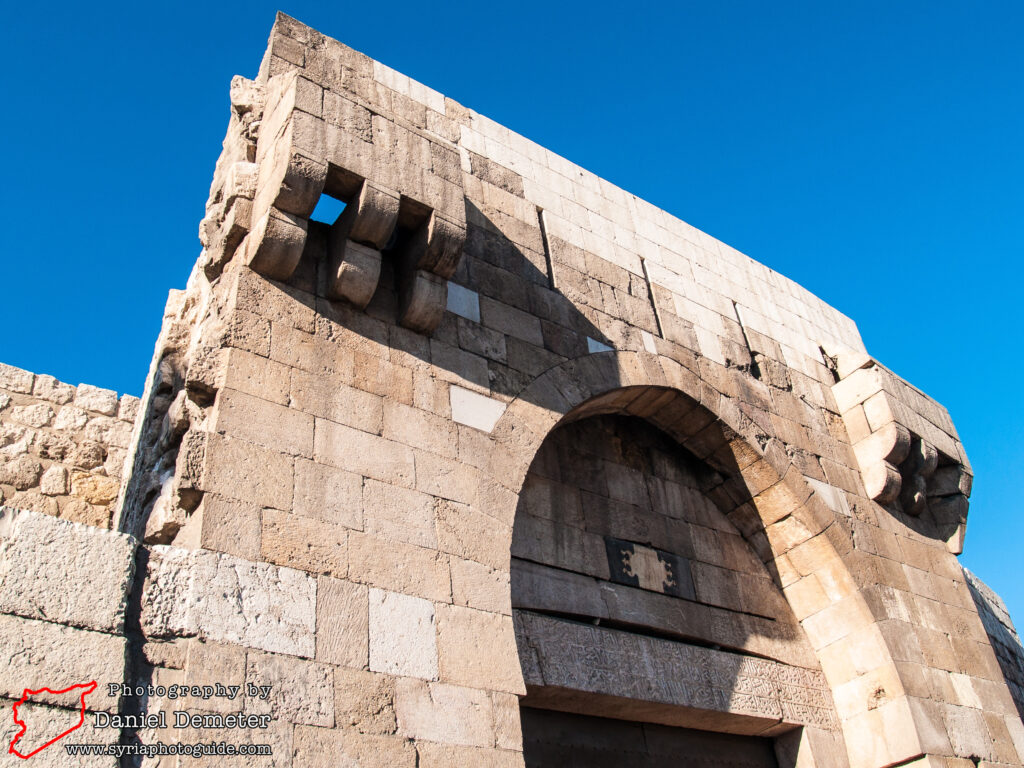
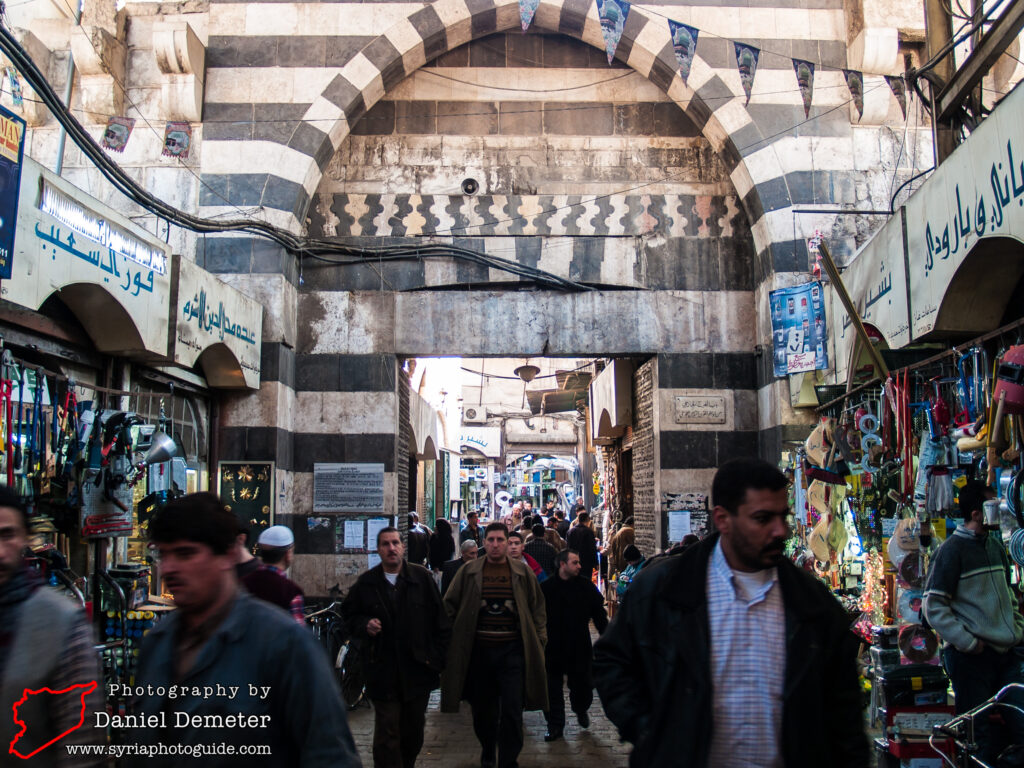

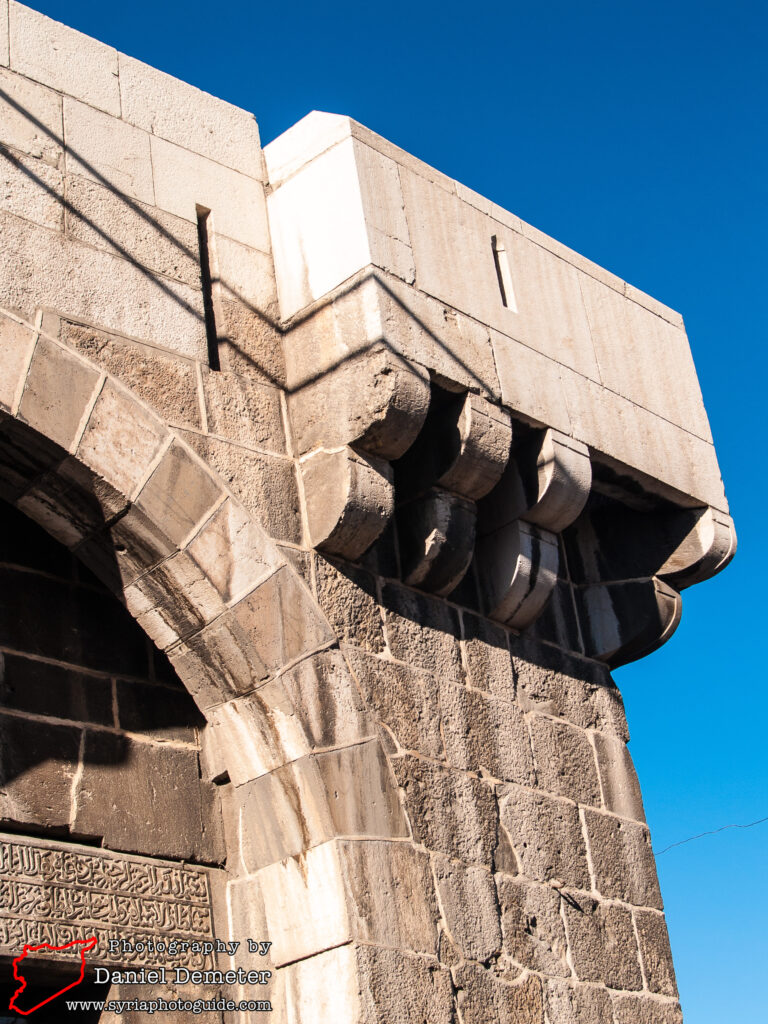
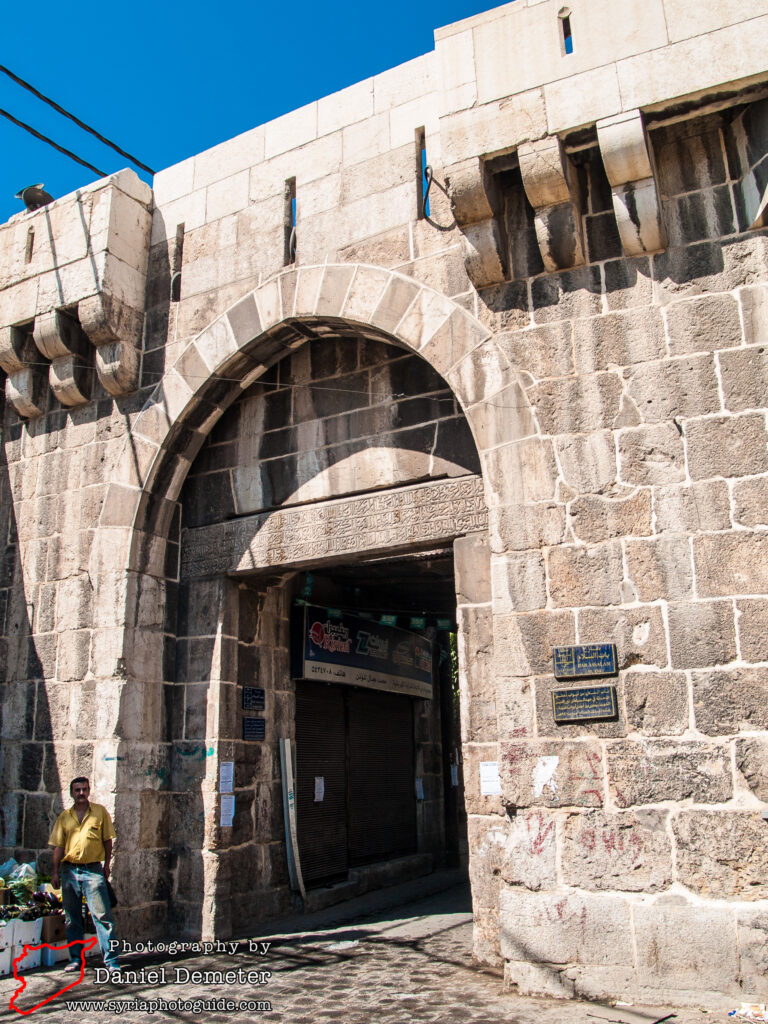
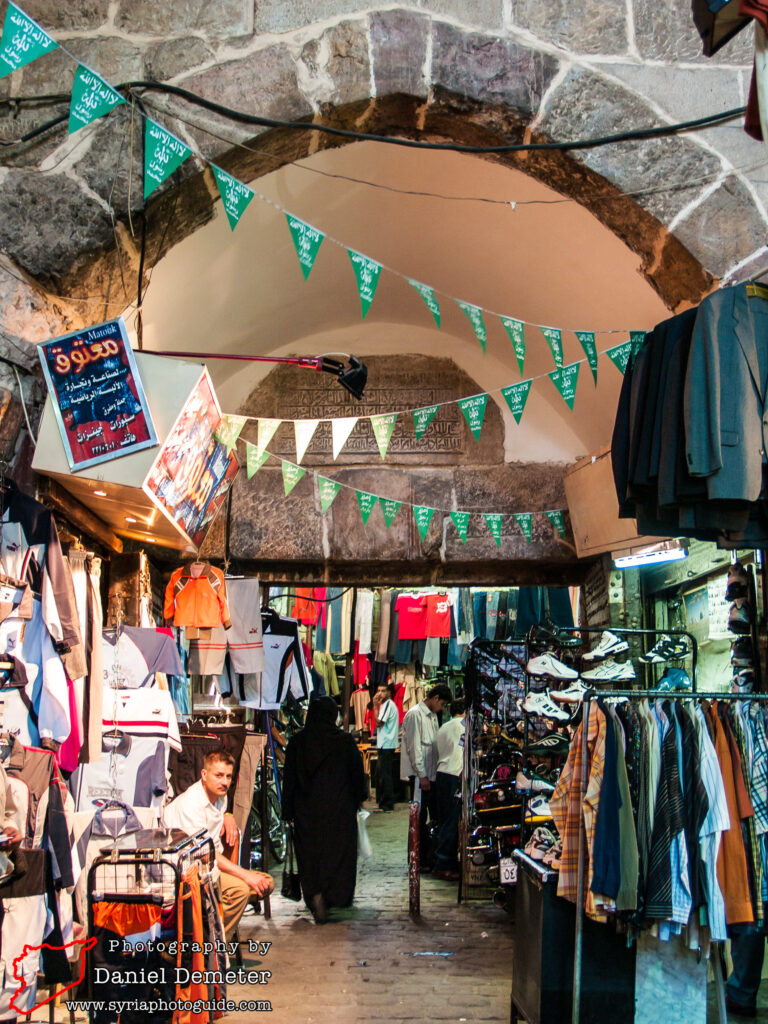
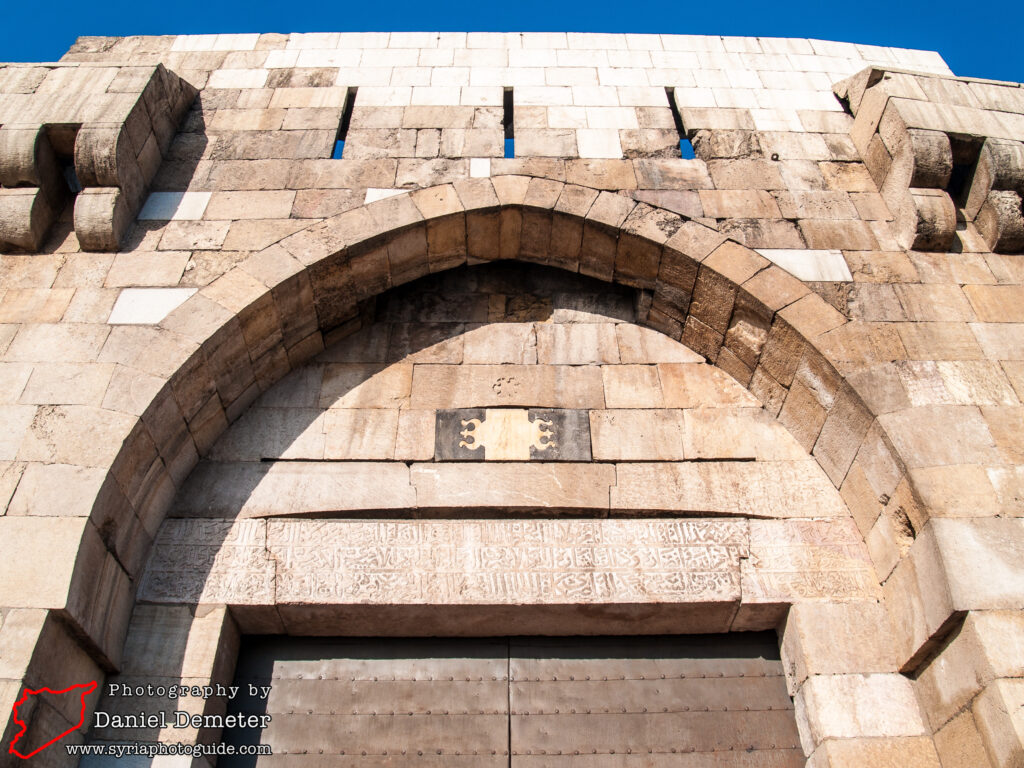
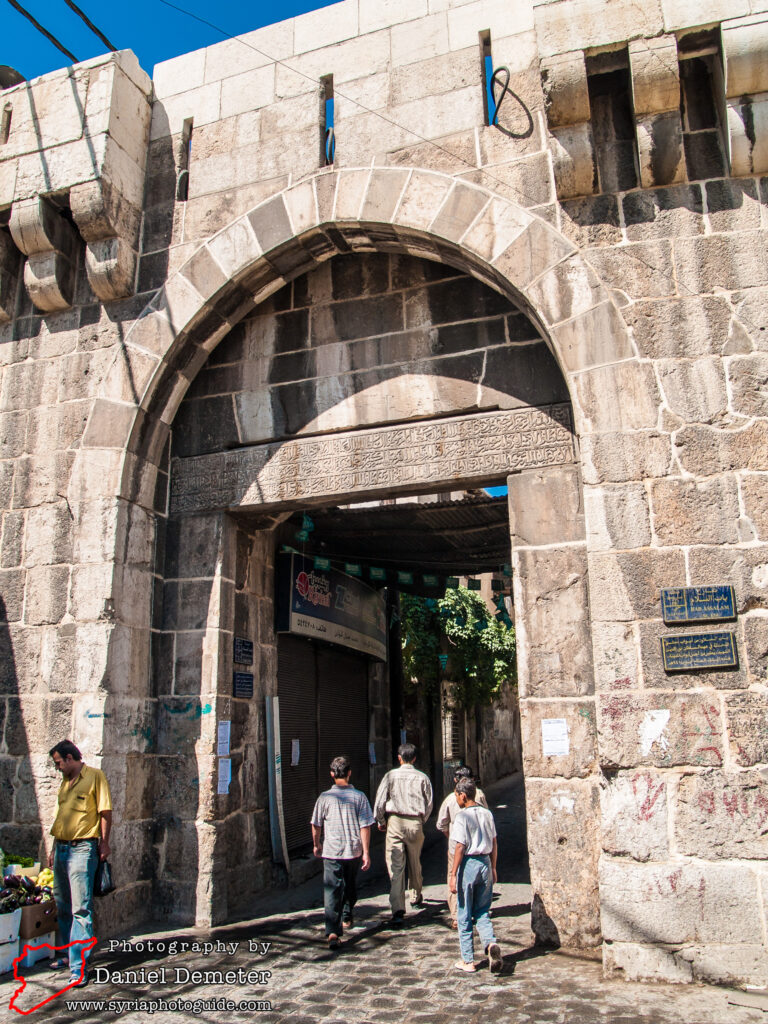
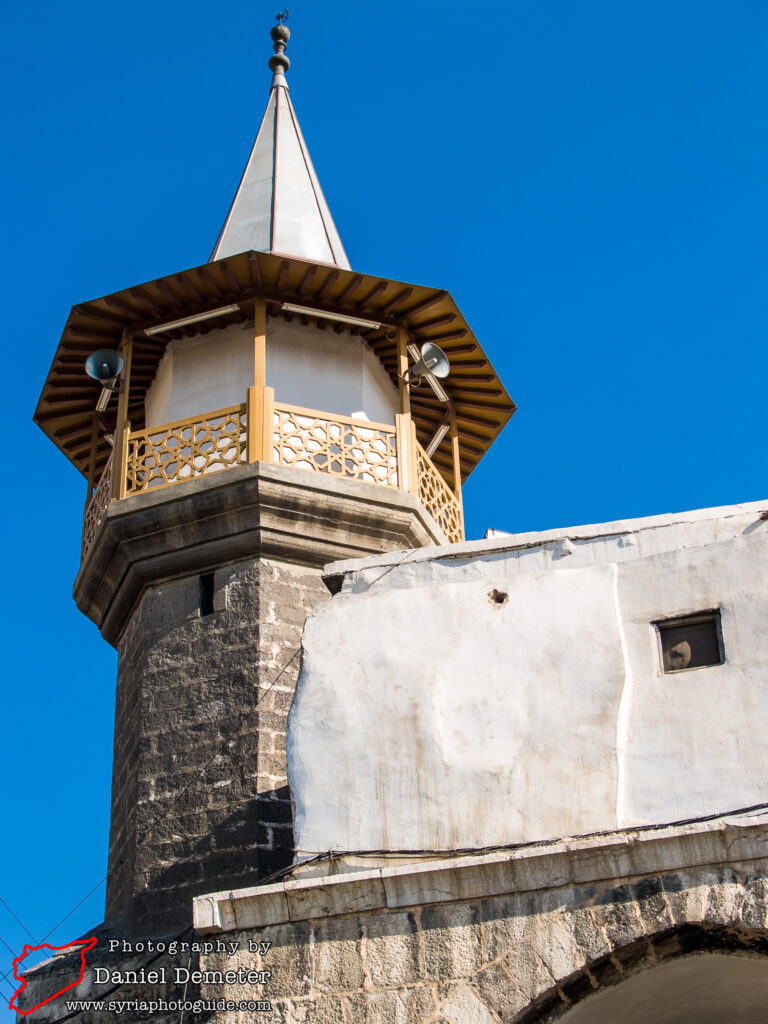
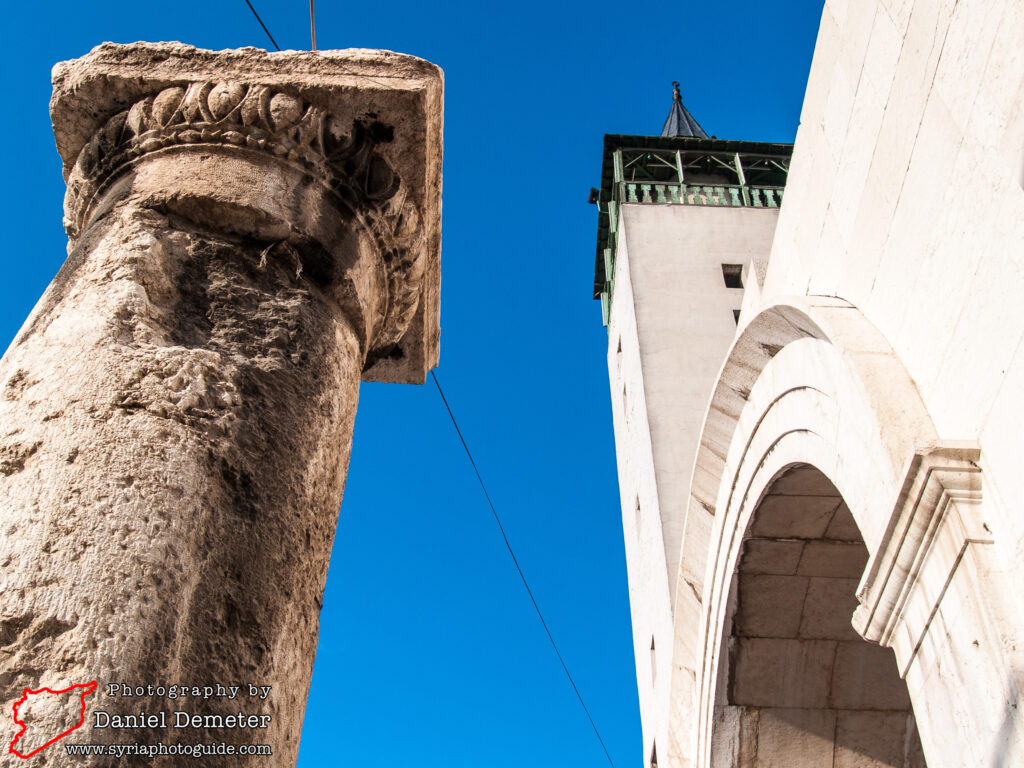
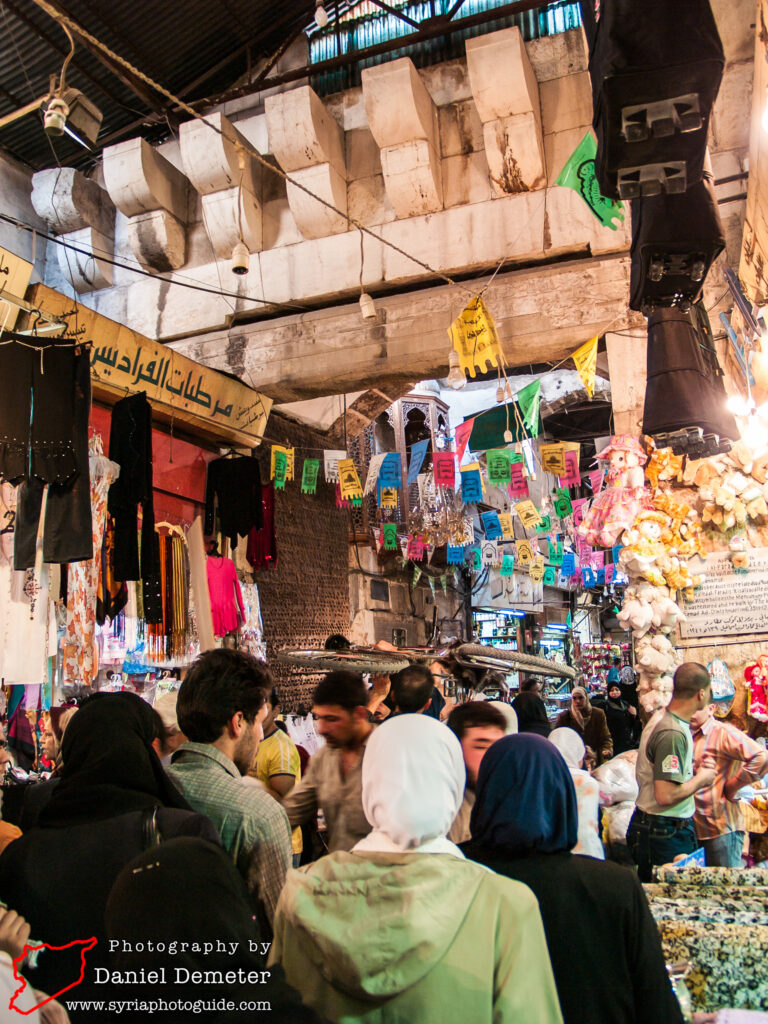
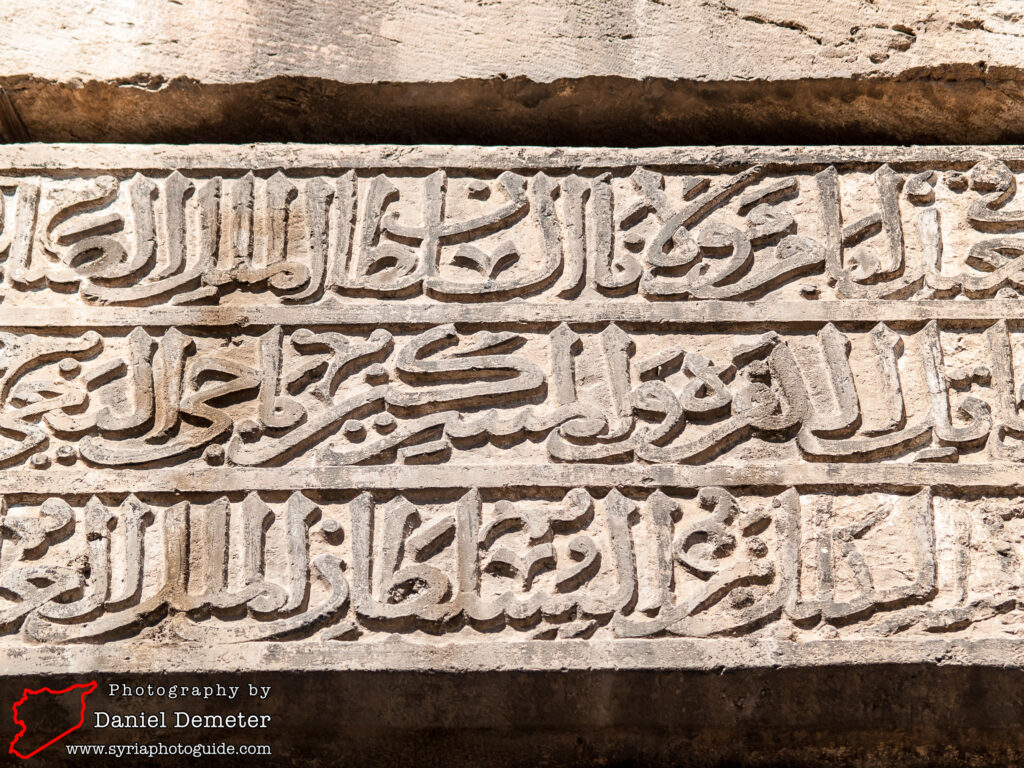
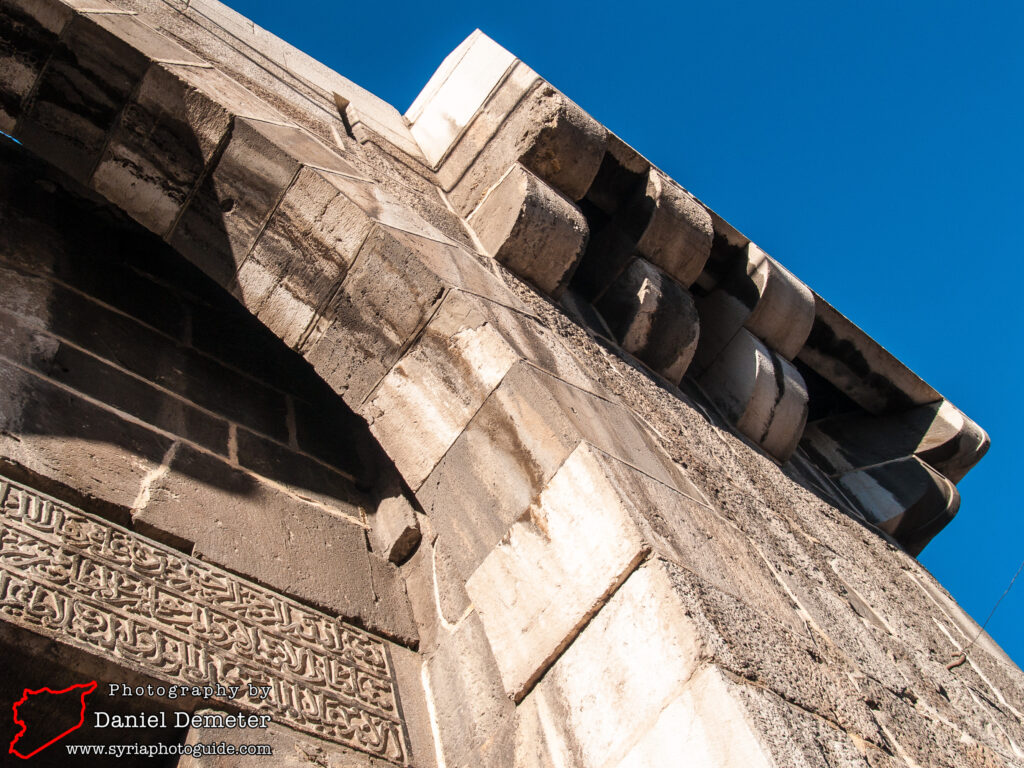
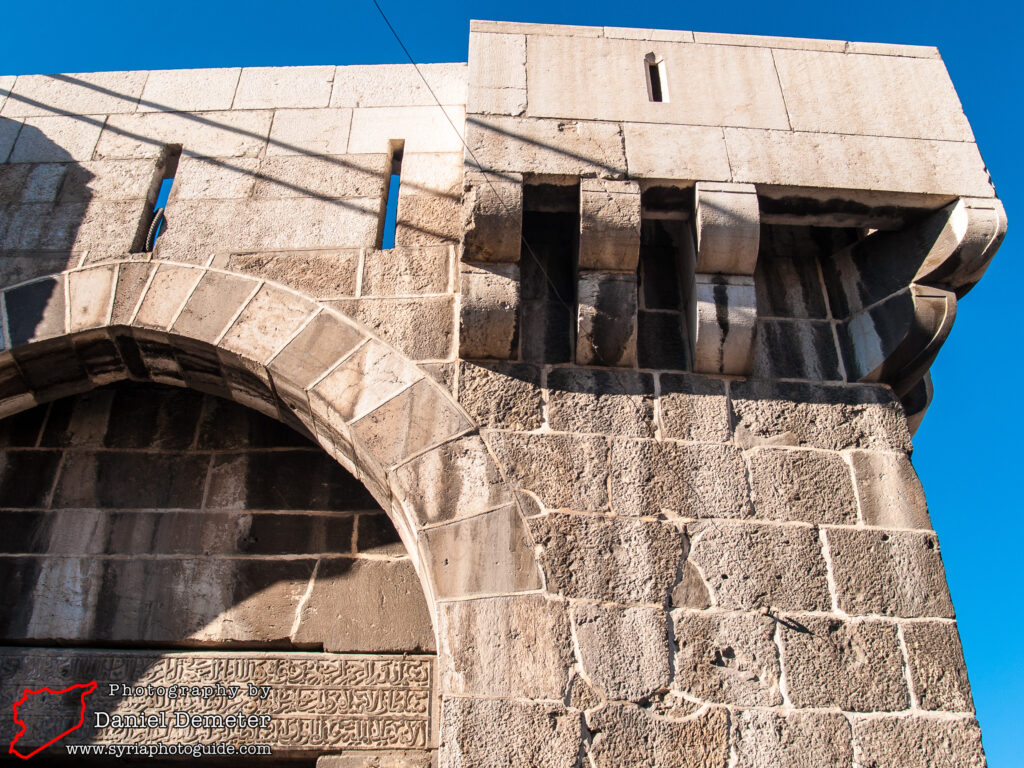

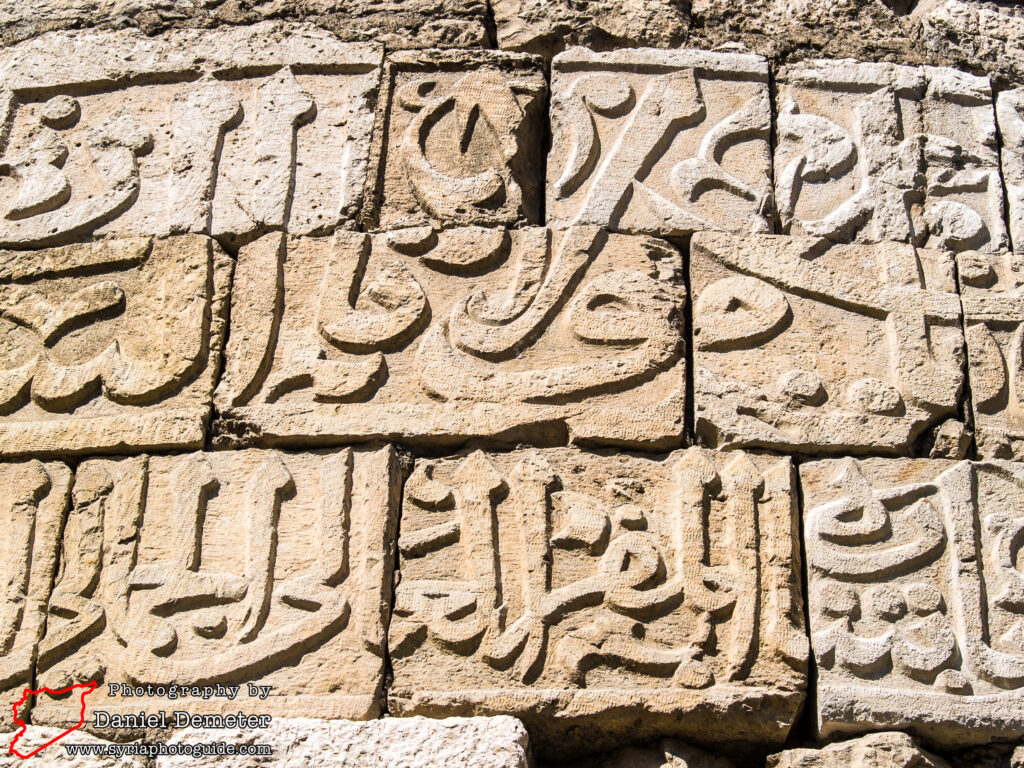
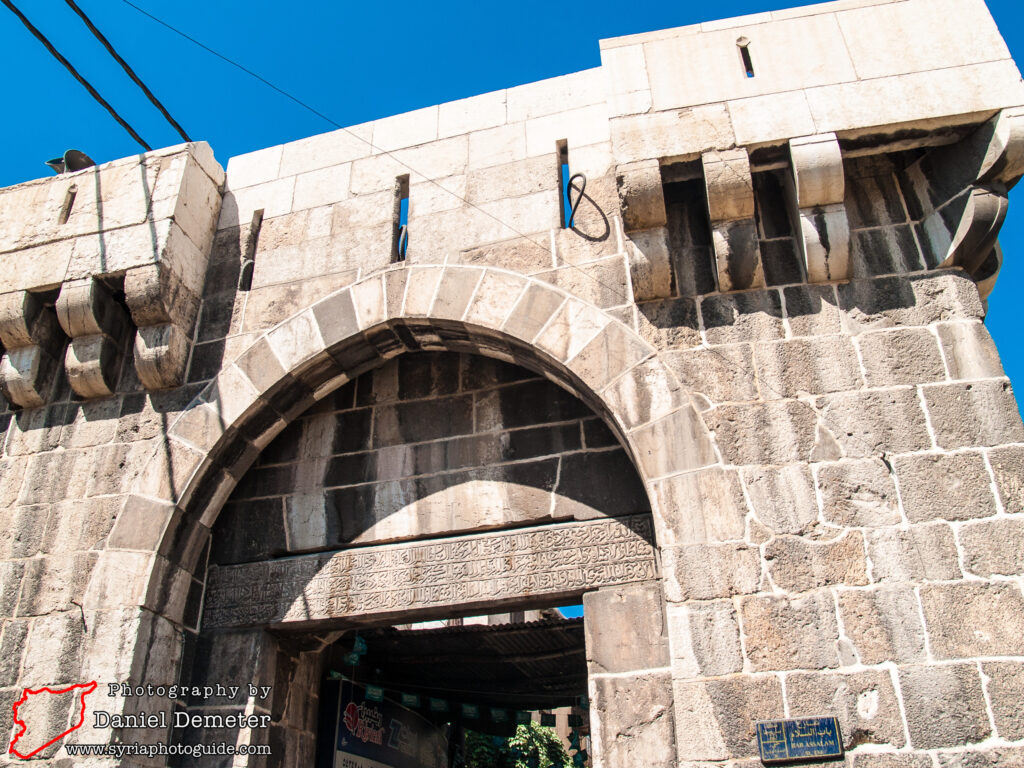
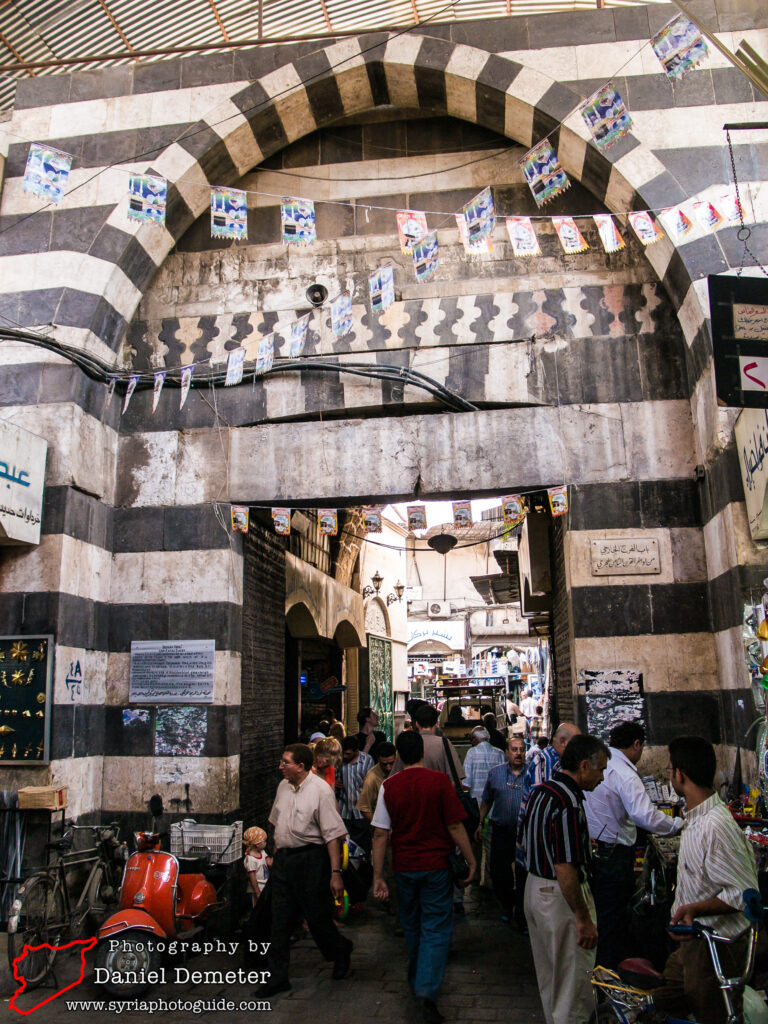
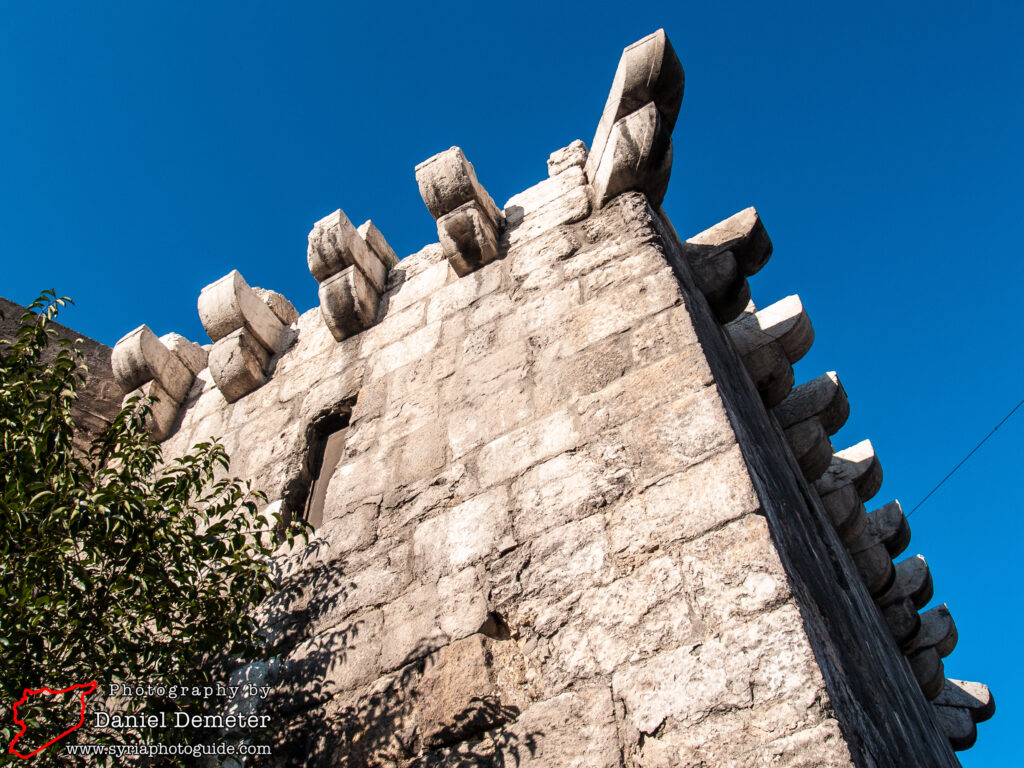
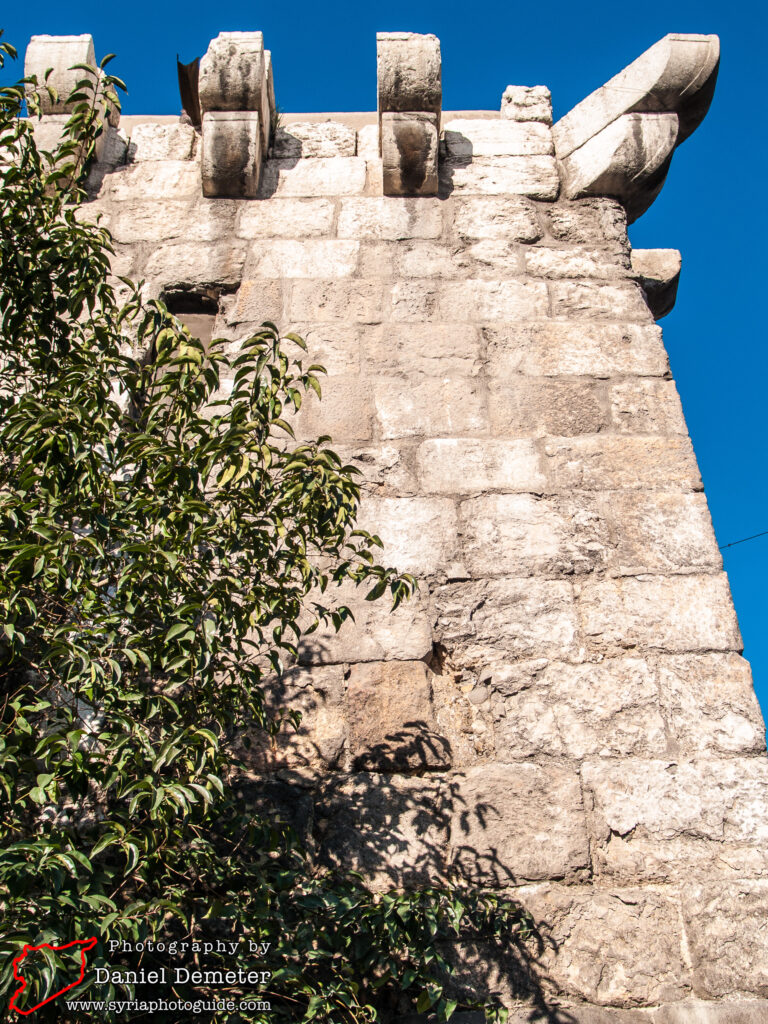
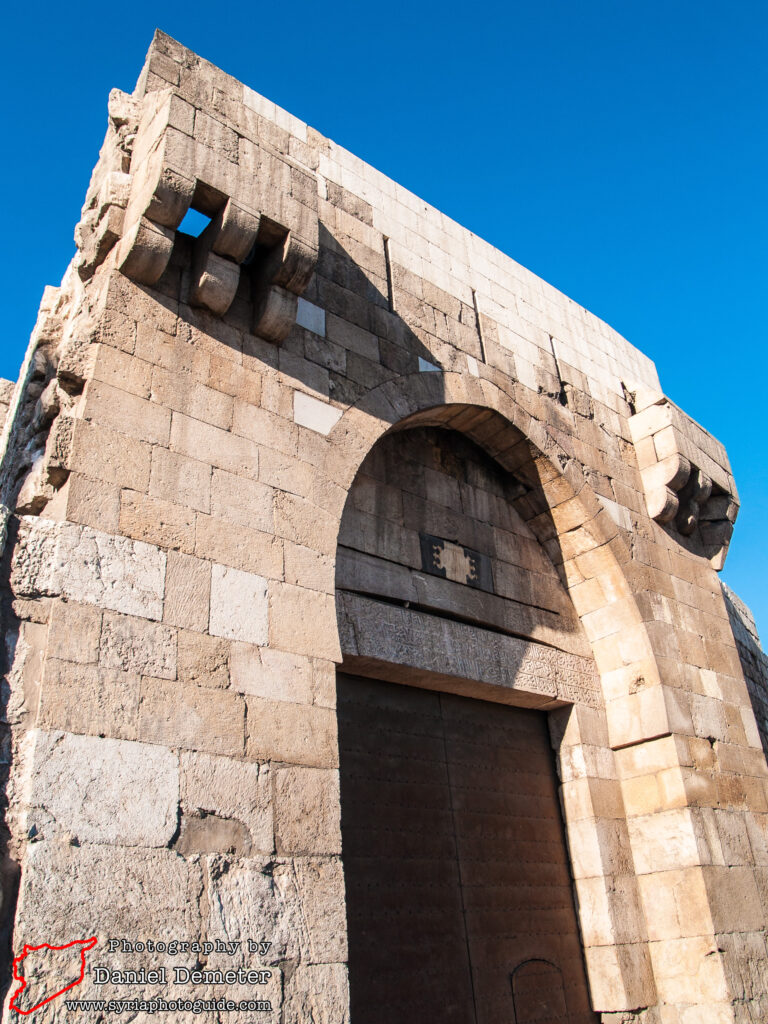
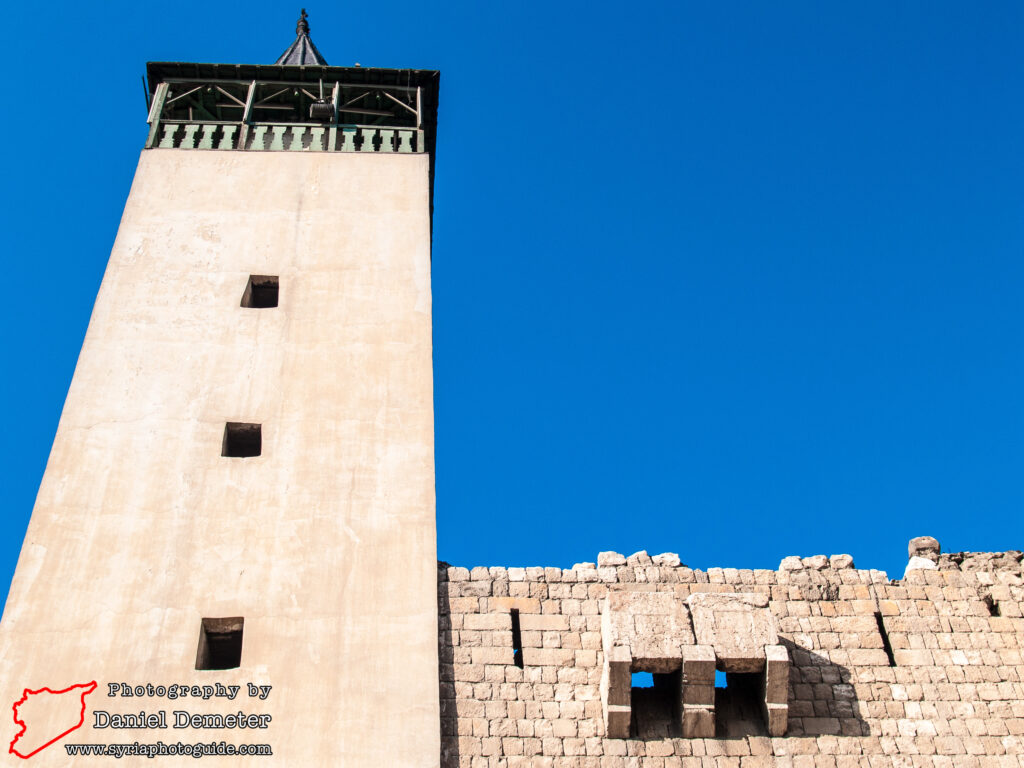
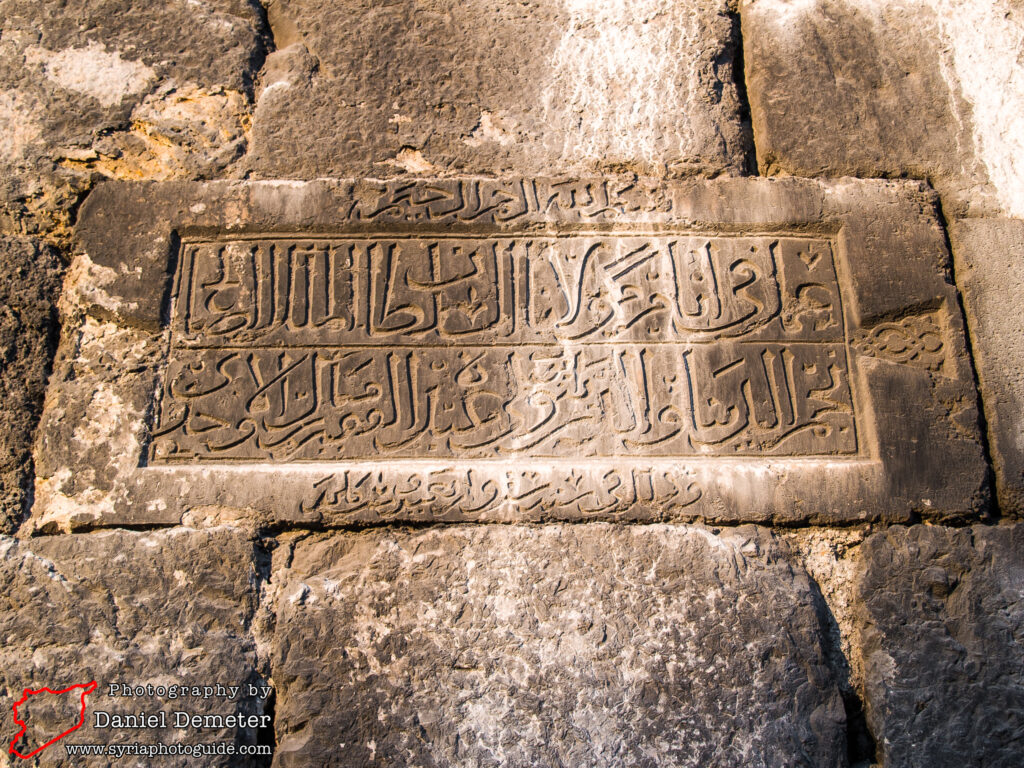
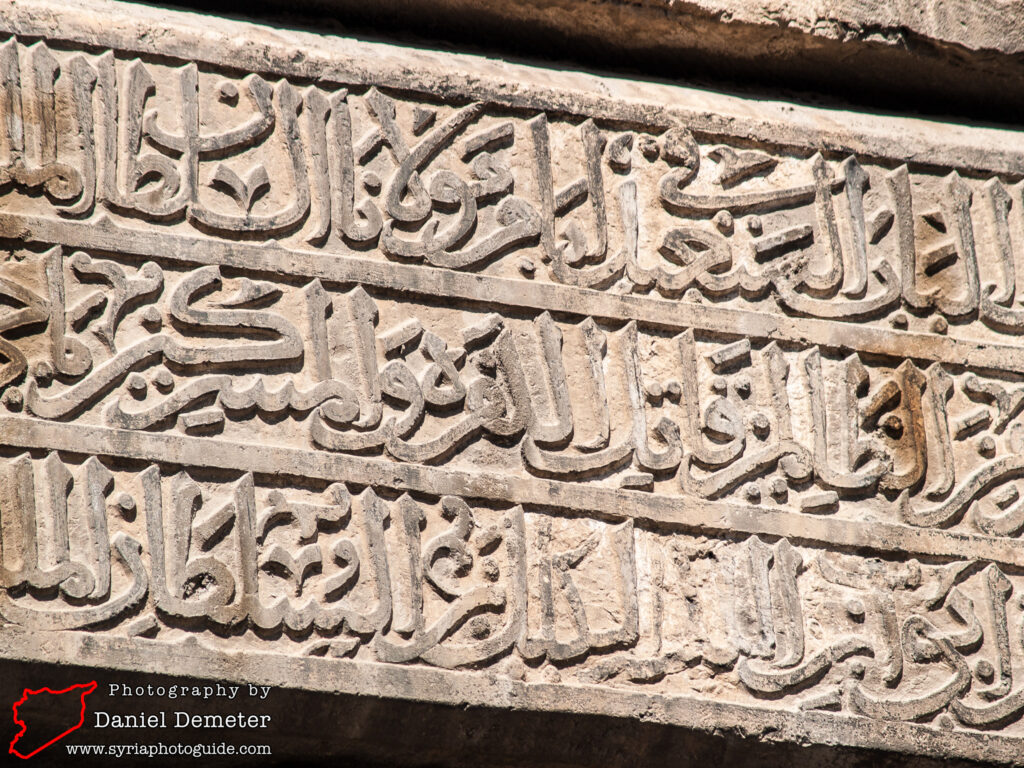
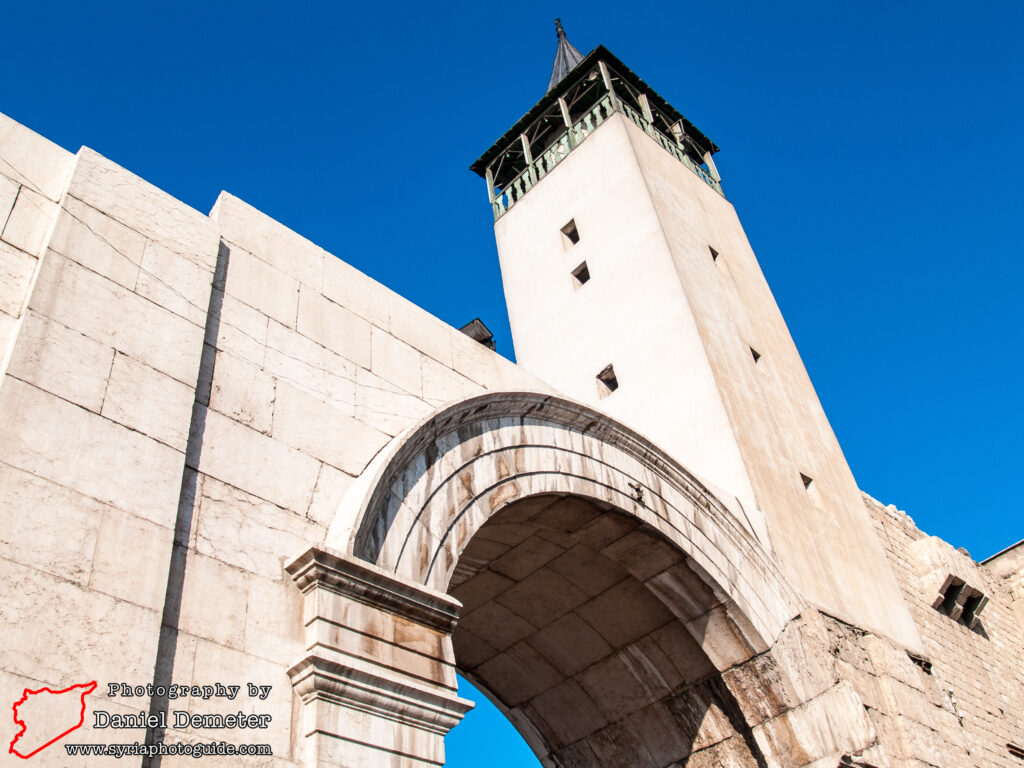
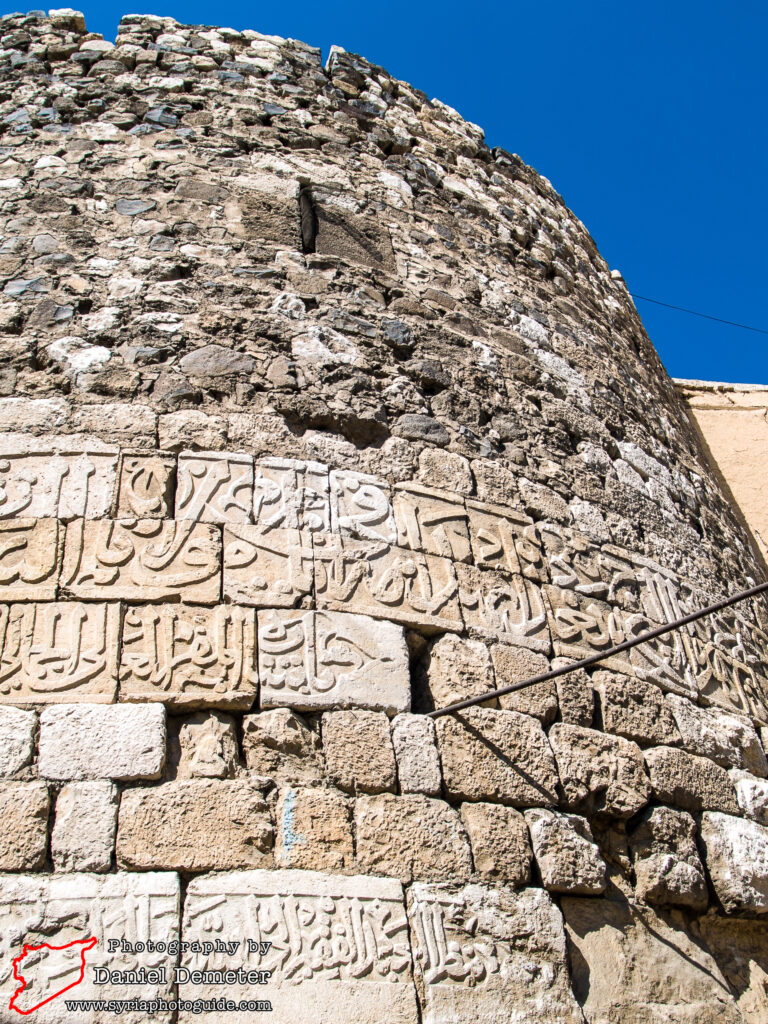
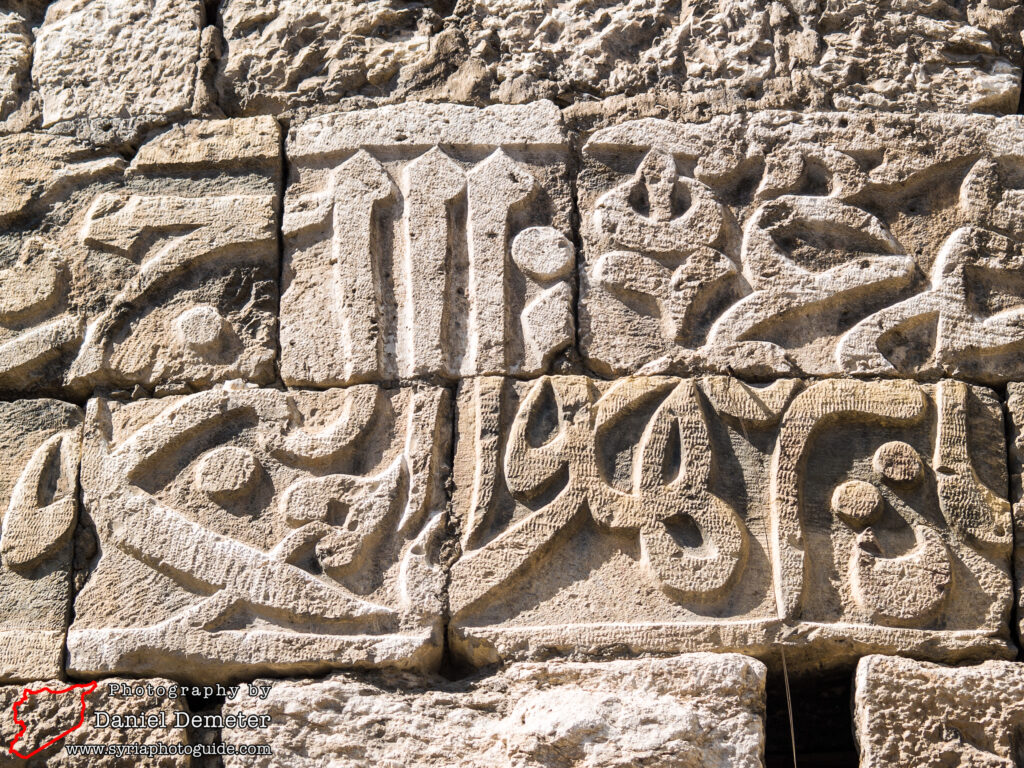
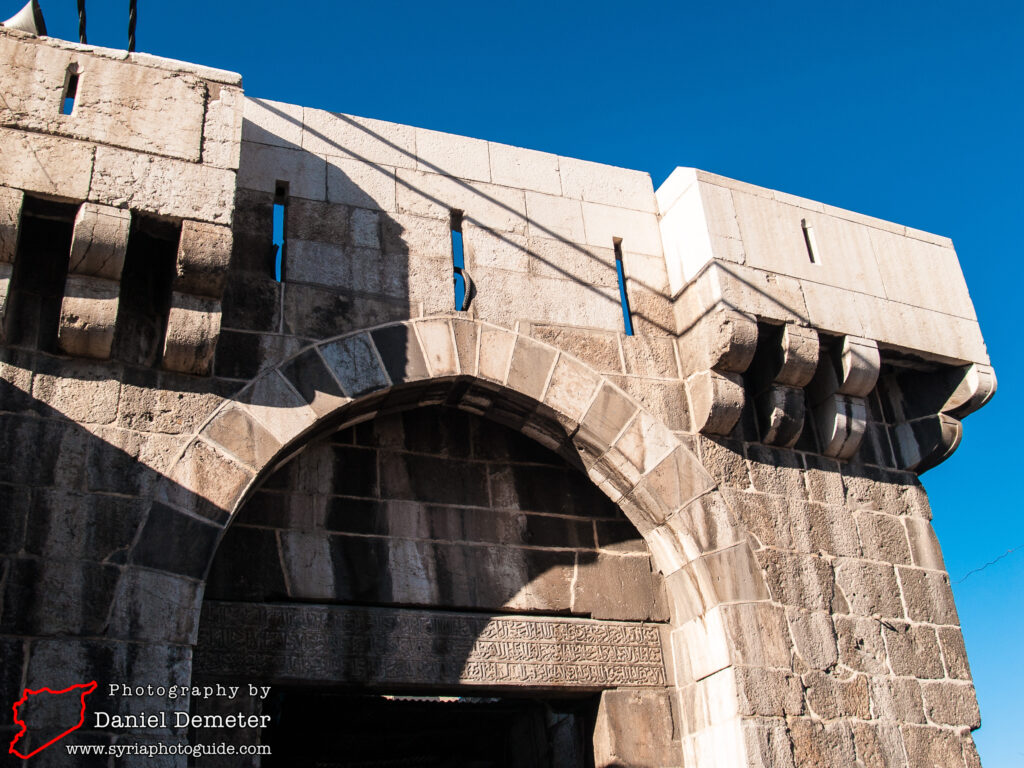
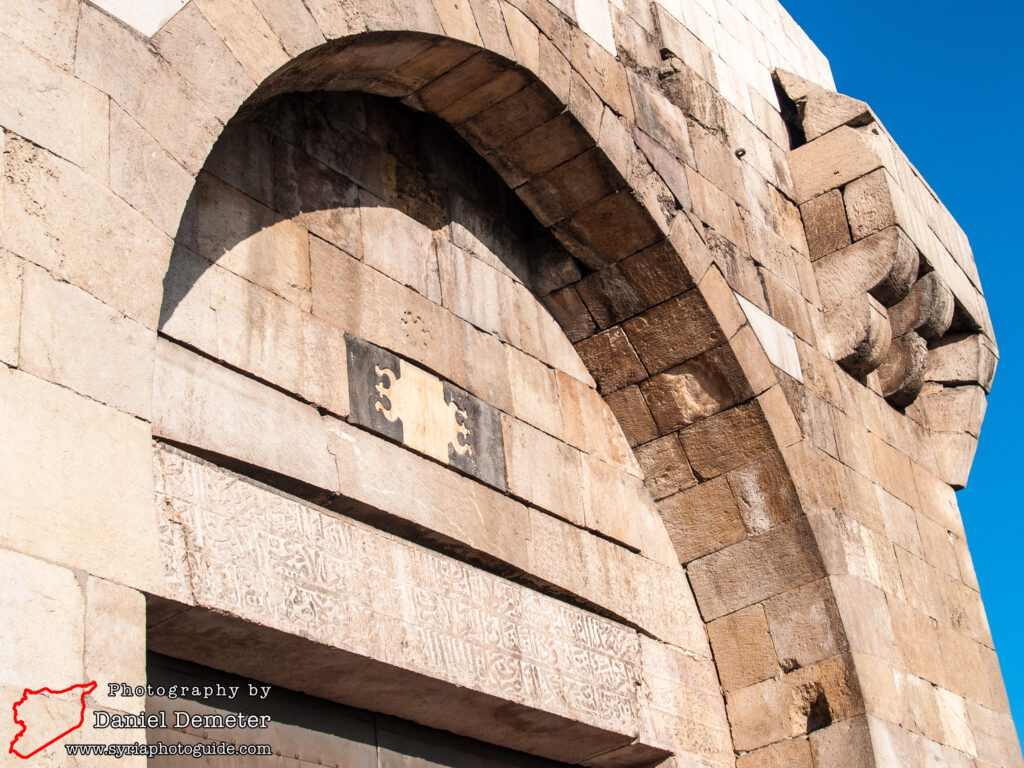
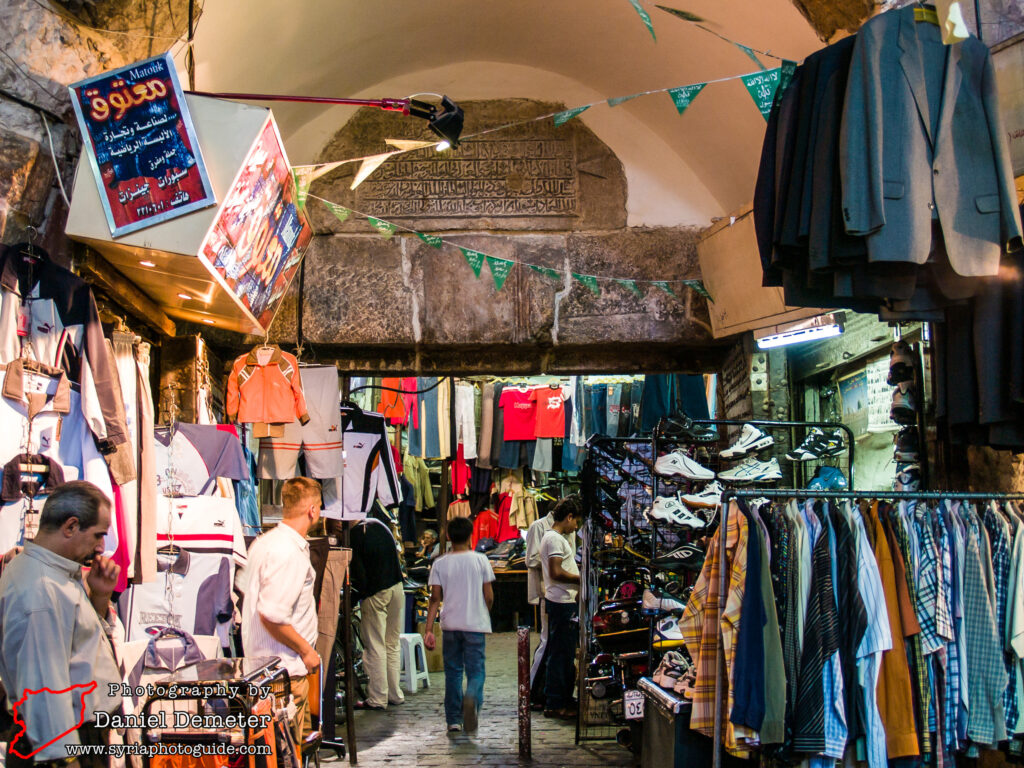
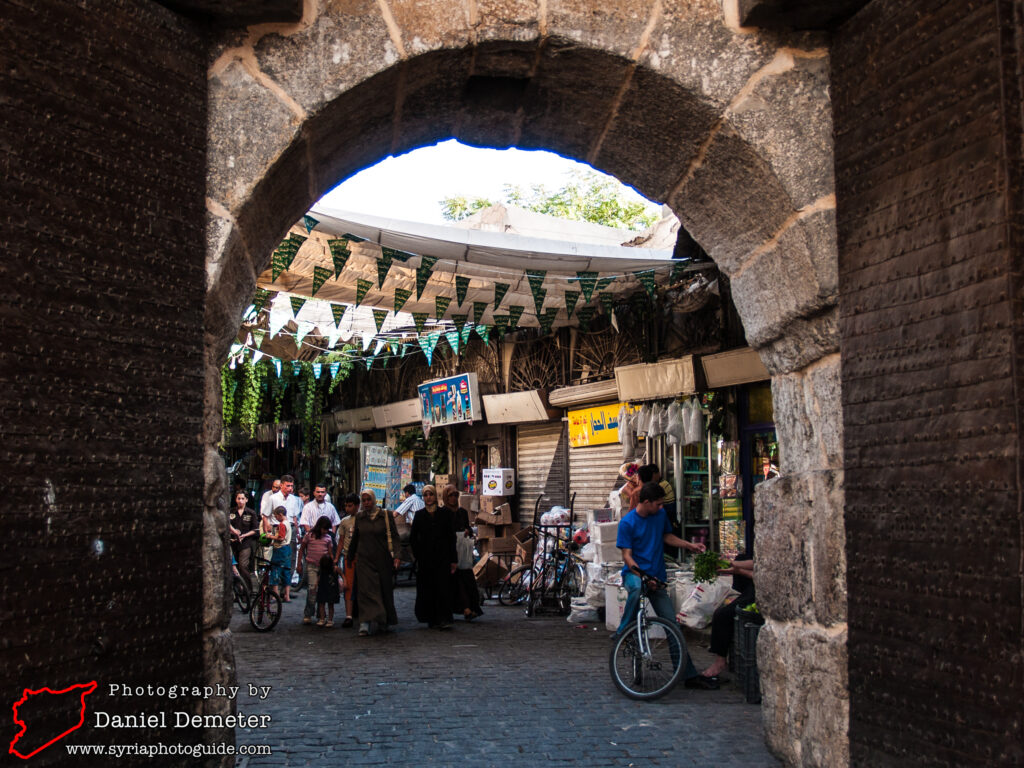
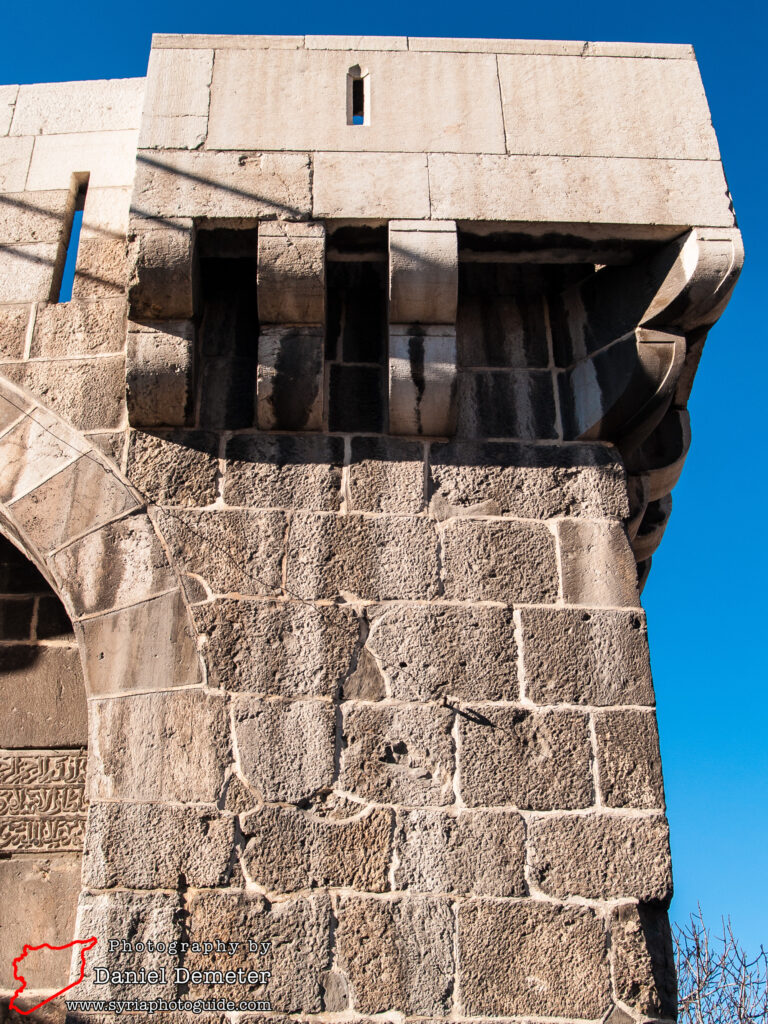
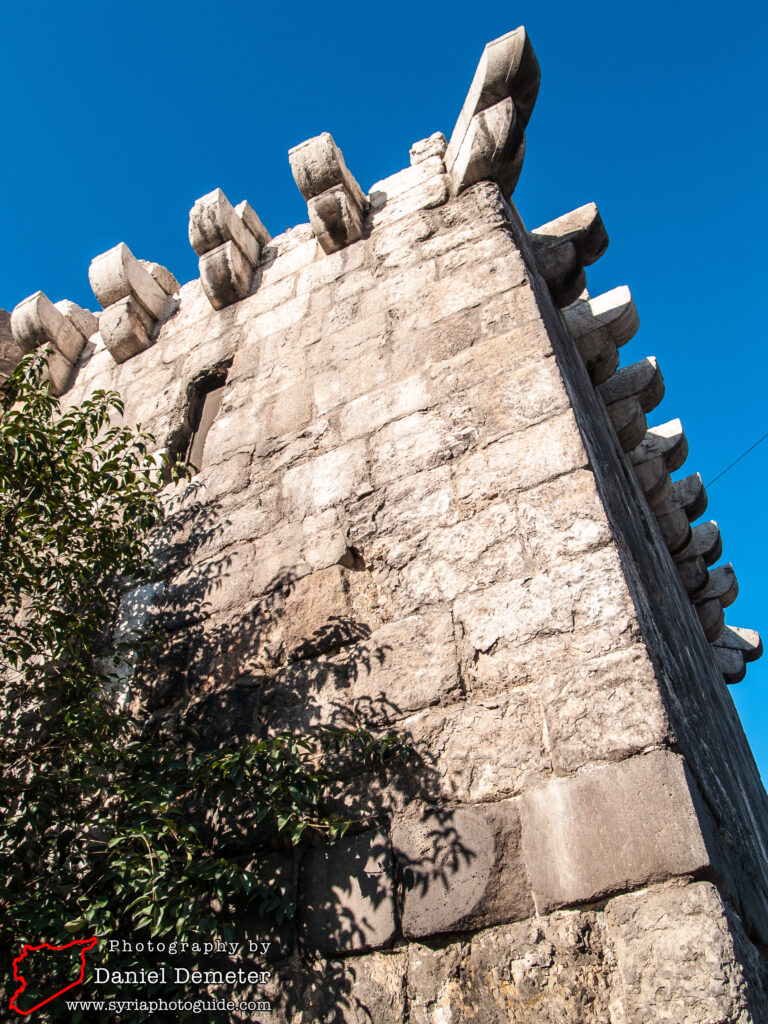
Getting There: There are a total of eight surviving gates surrounding the old city of Damascus (دمشق). They are best visited on foot.
Coordinates: 33°30’34.00″N / 36°19’05.00″E (Bab Sharqi)
Transliteration Variants: Bab al-Salaam, Bab Tuma, Bab Sharki, Bab al-Seghir, Bab al-Jabiye, Bab al-Jabiya, Bab al-Jabiyah
Rating: 5 / 10
